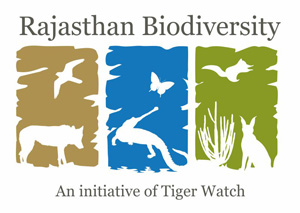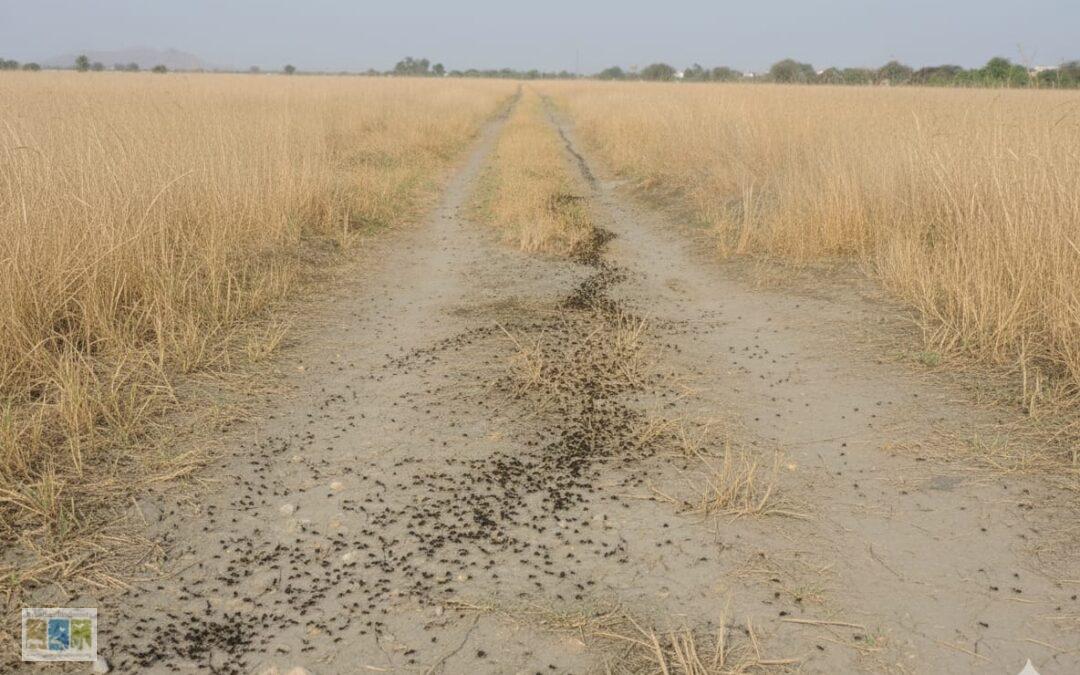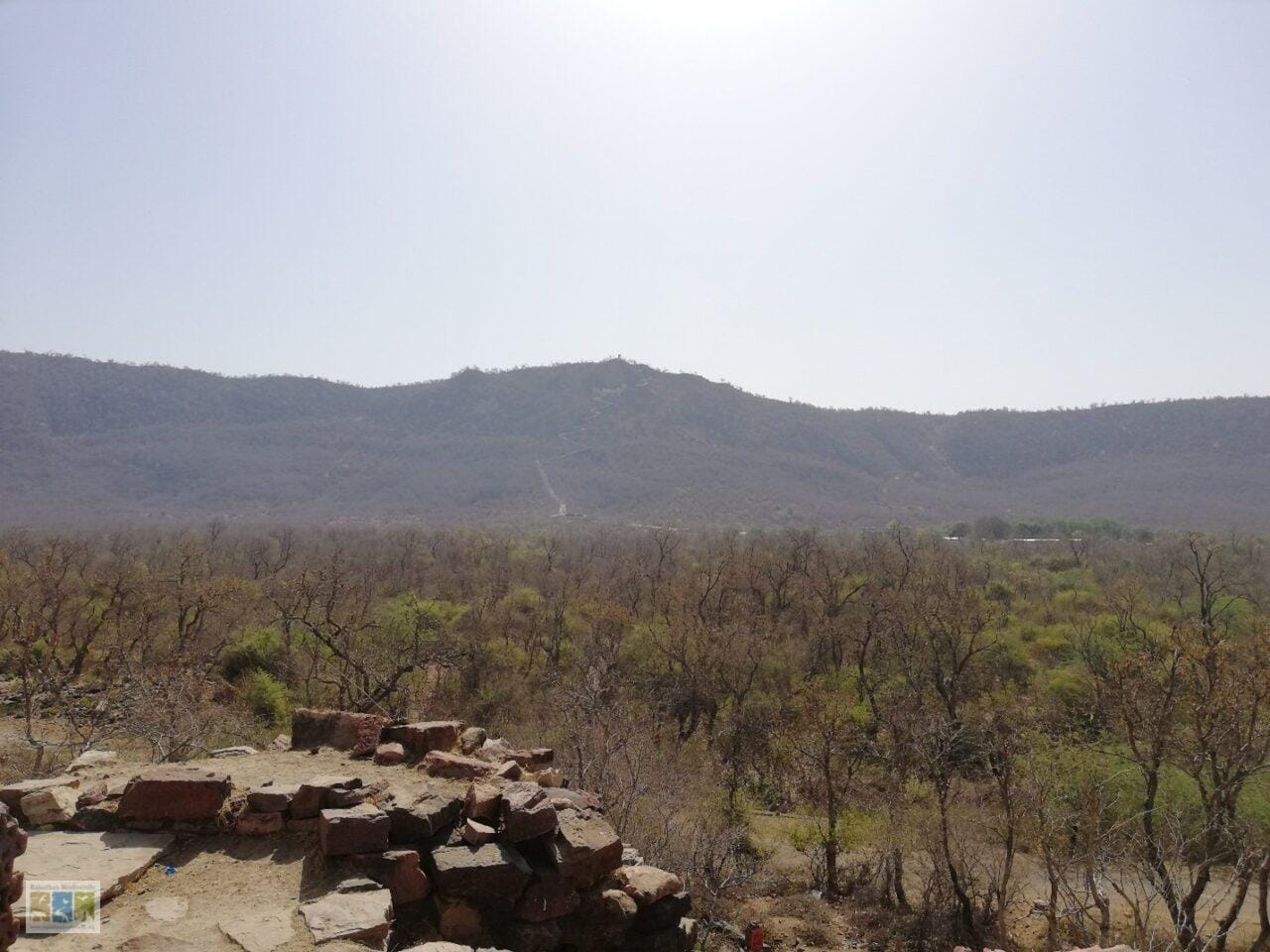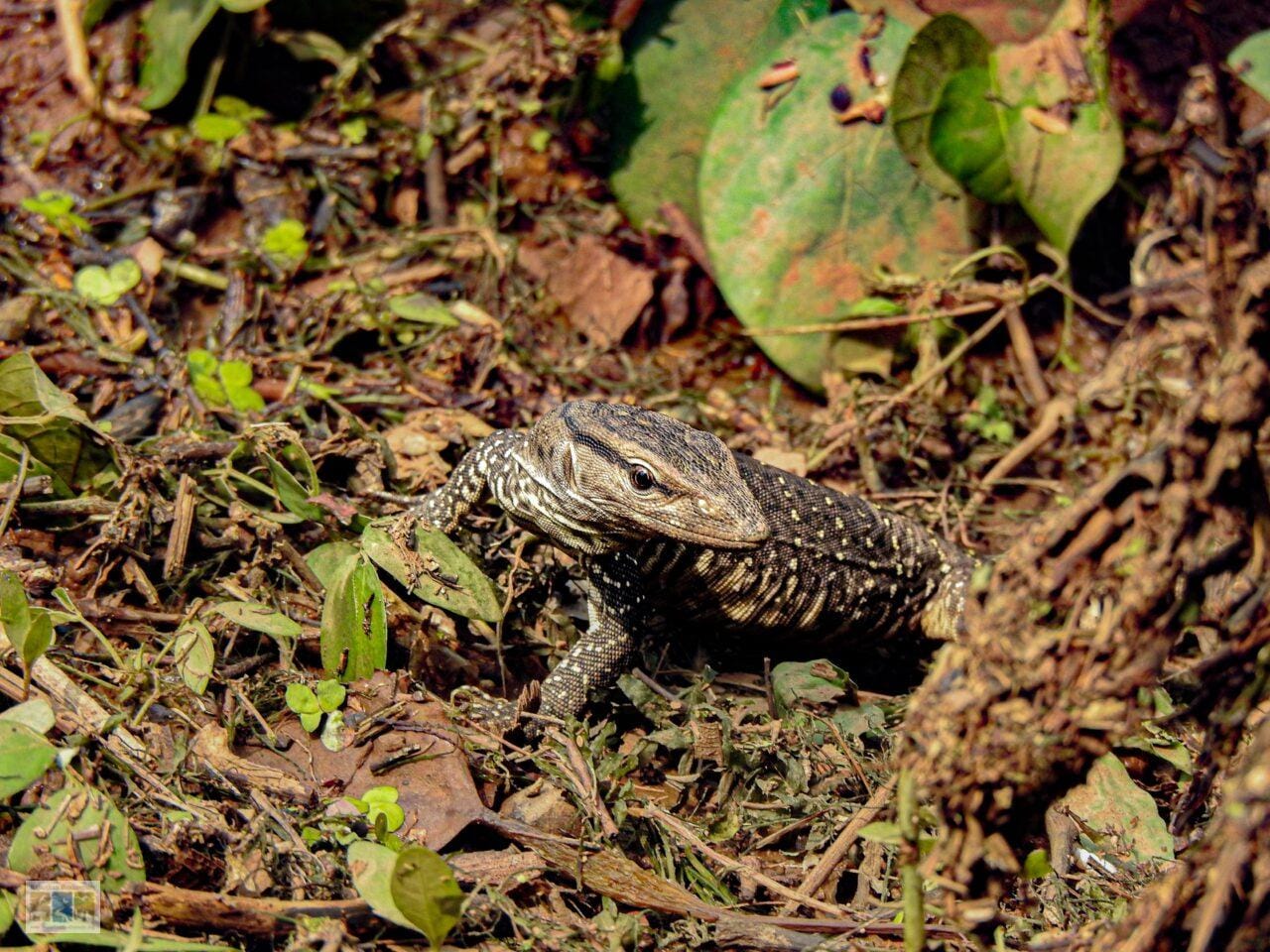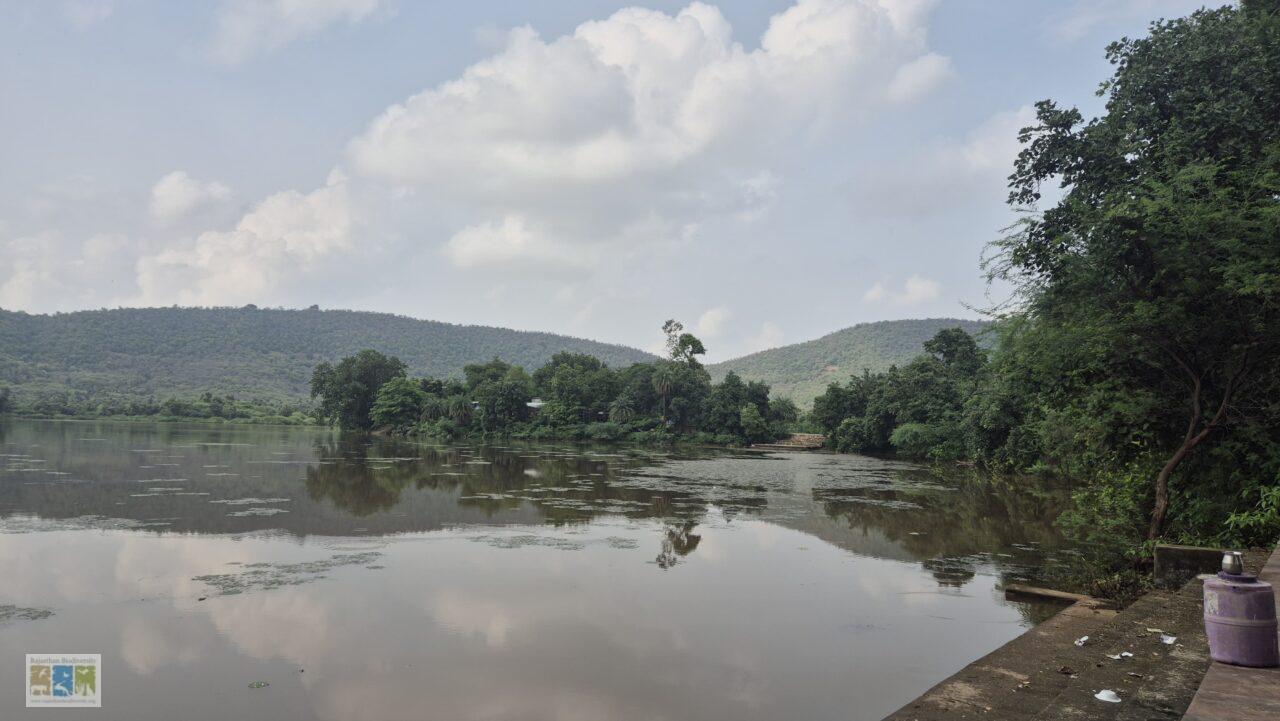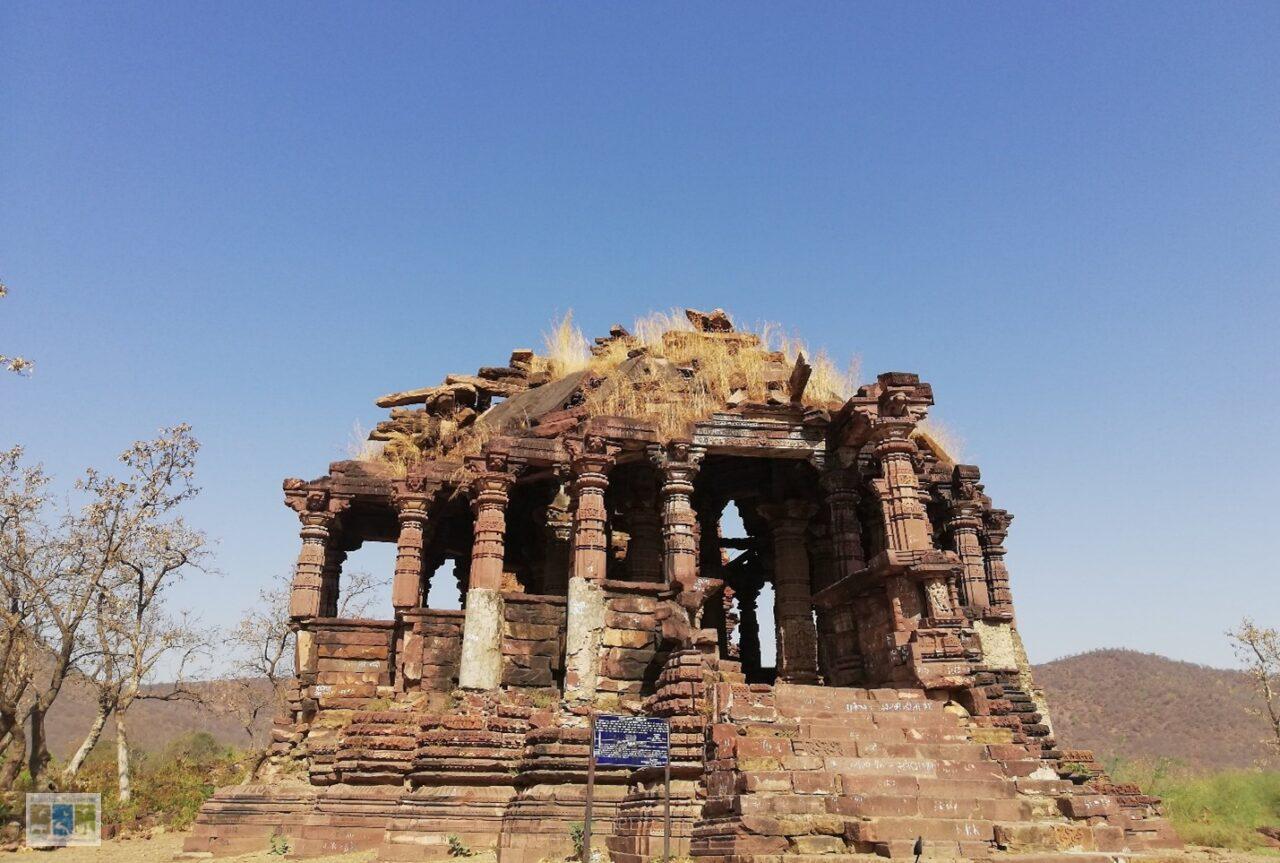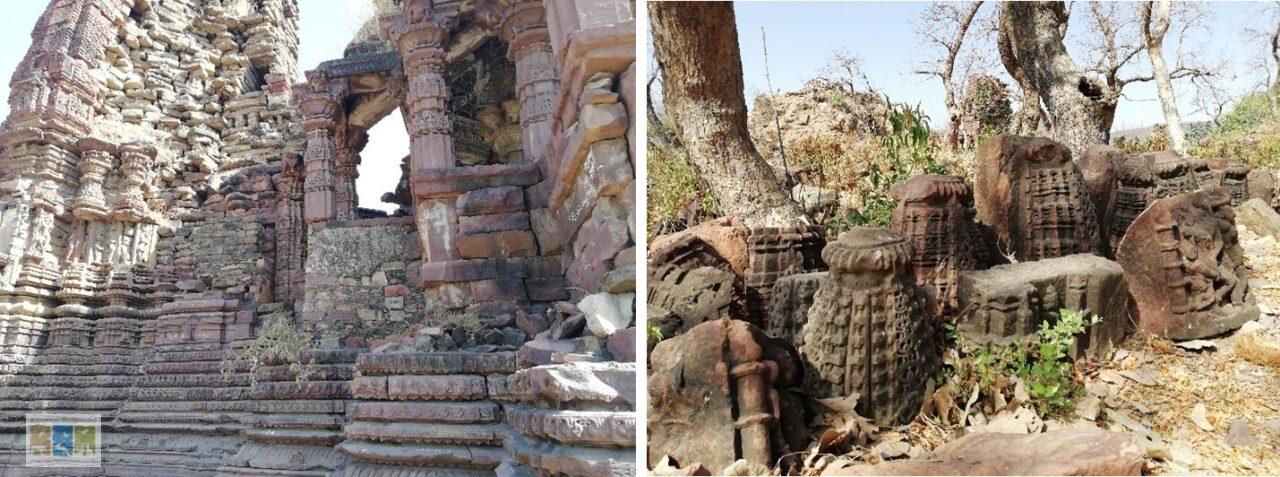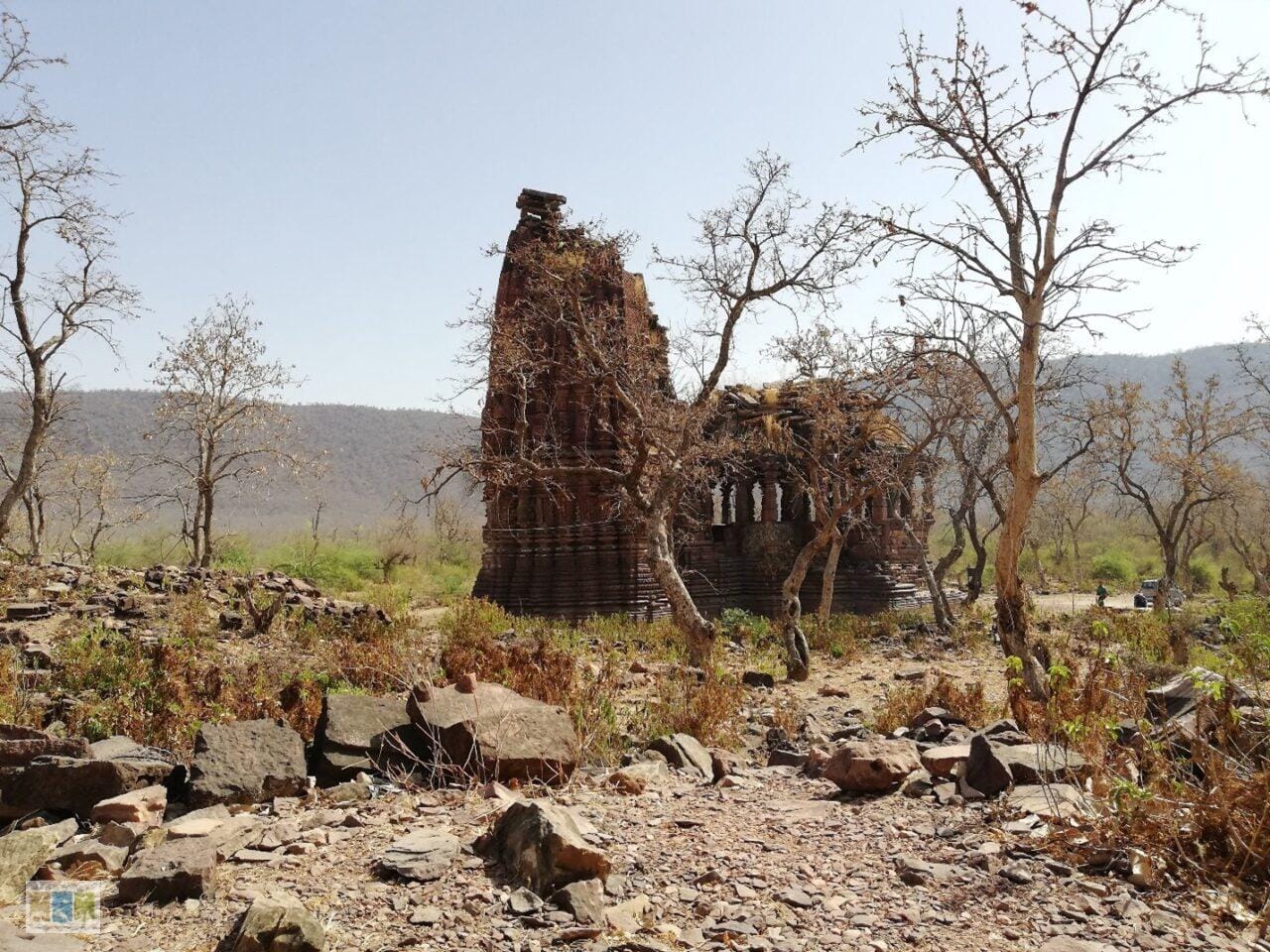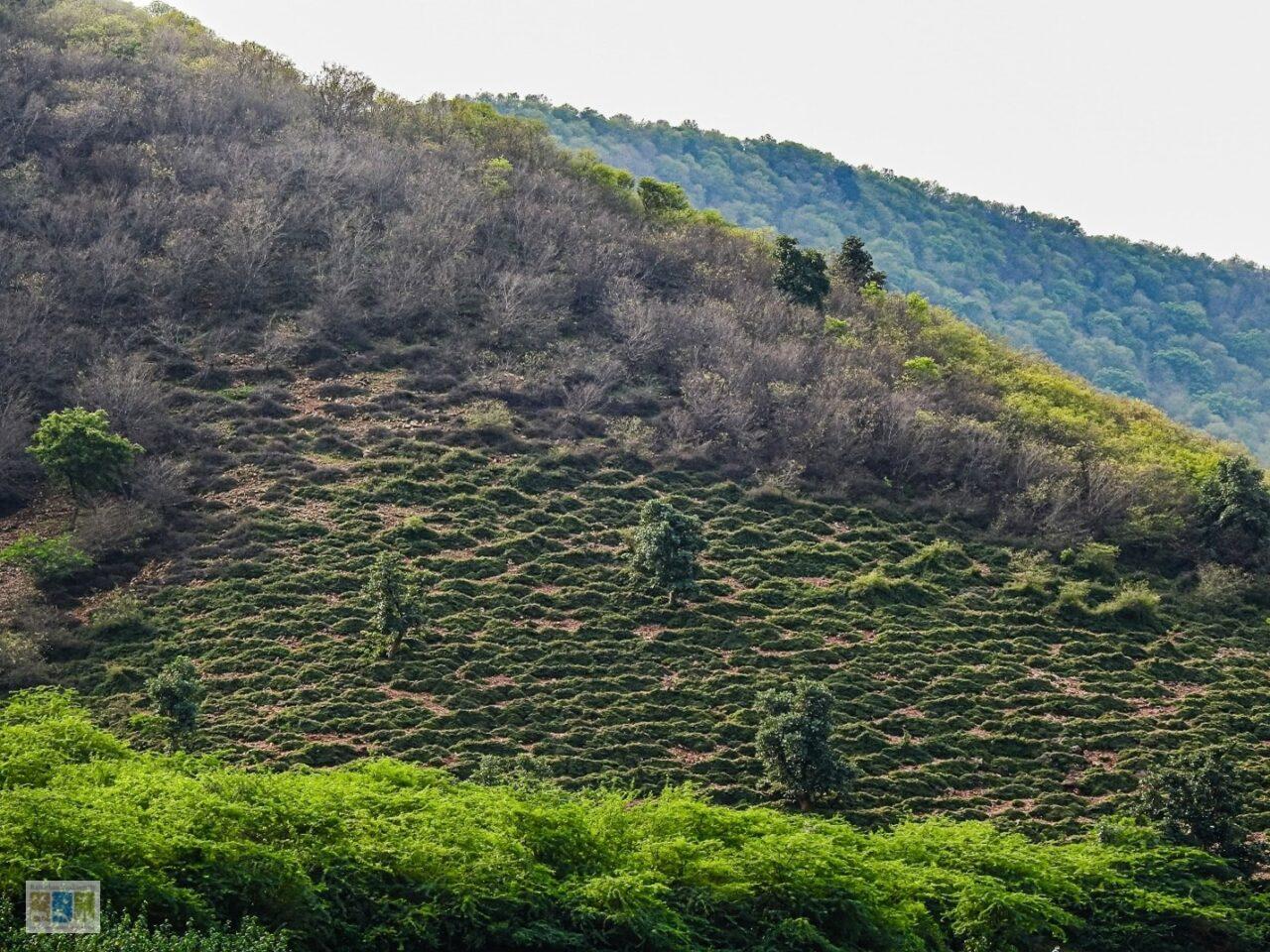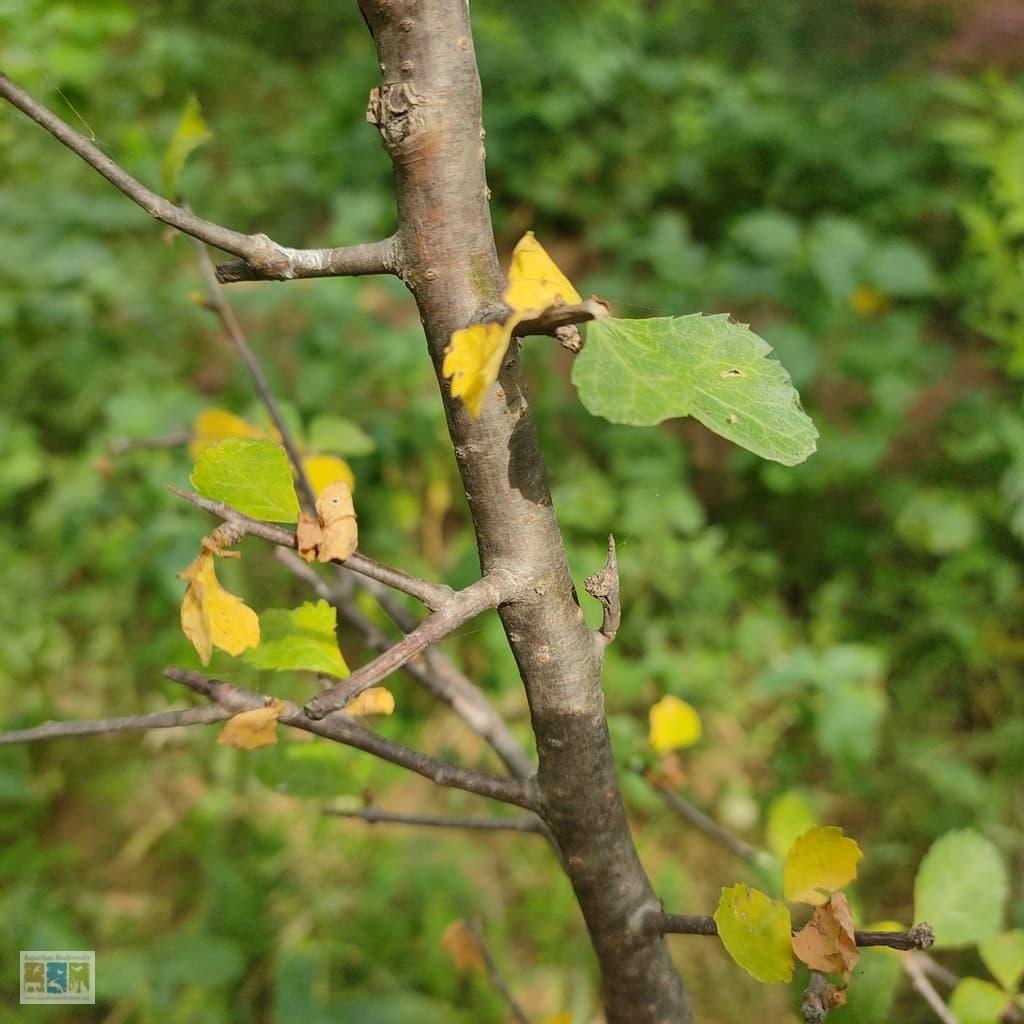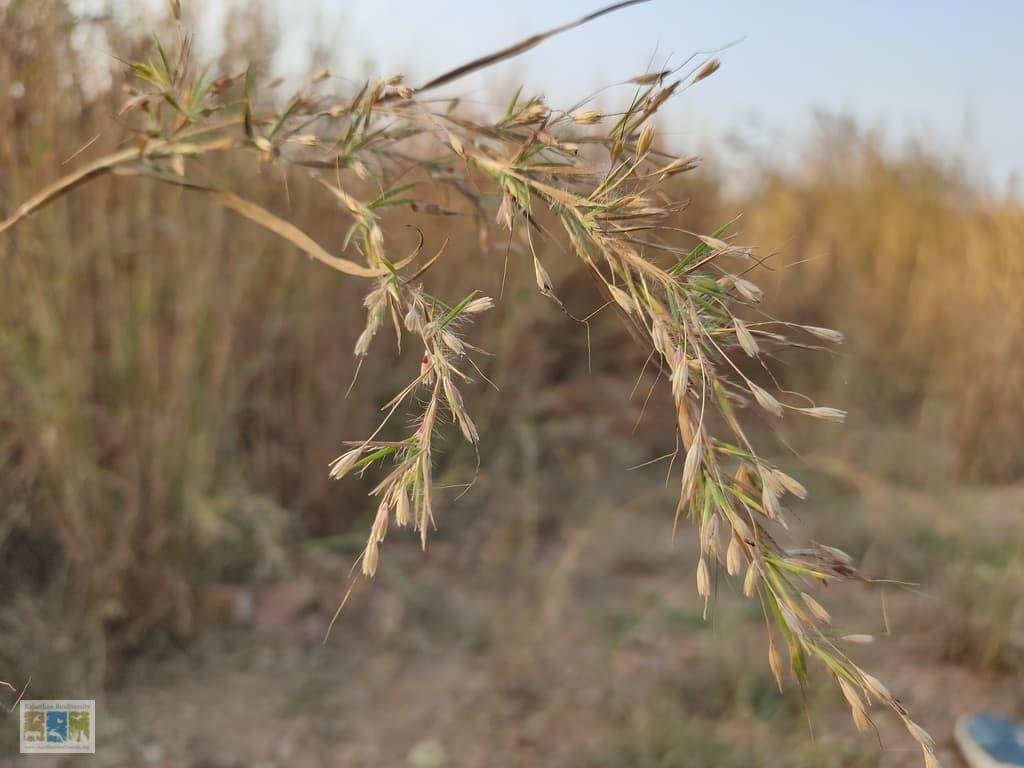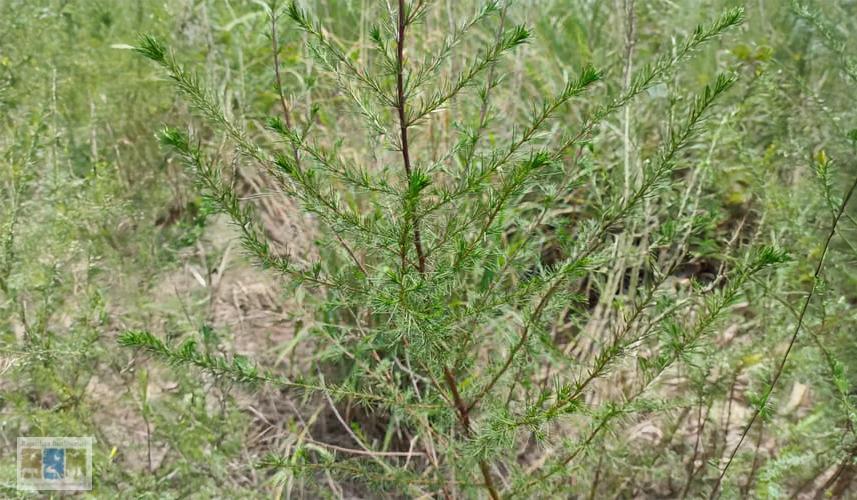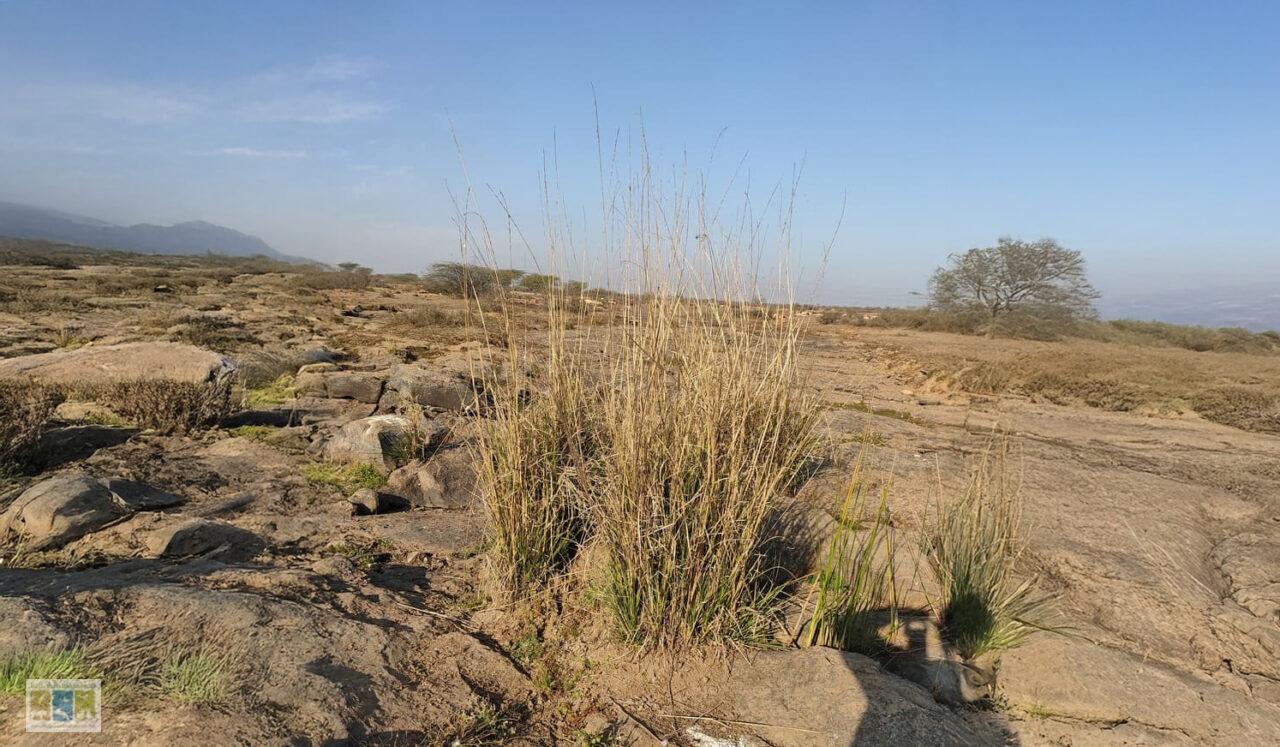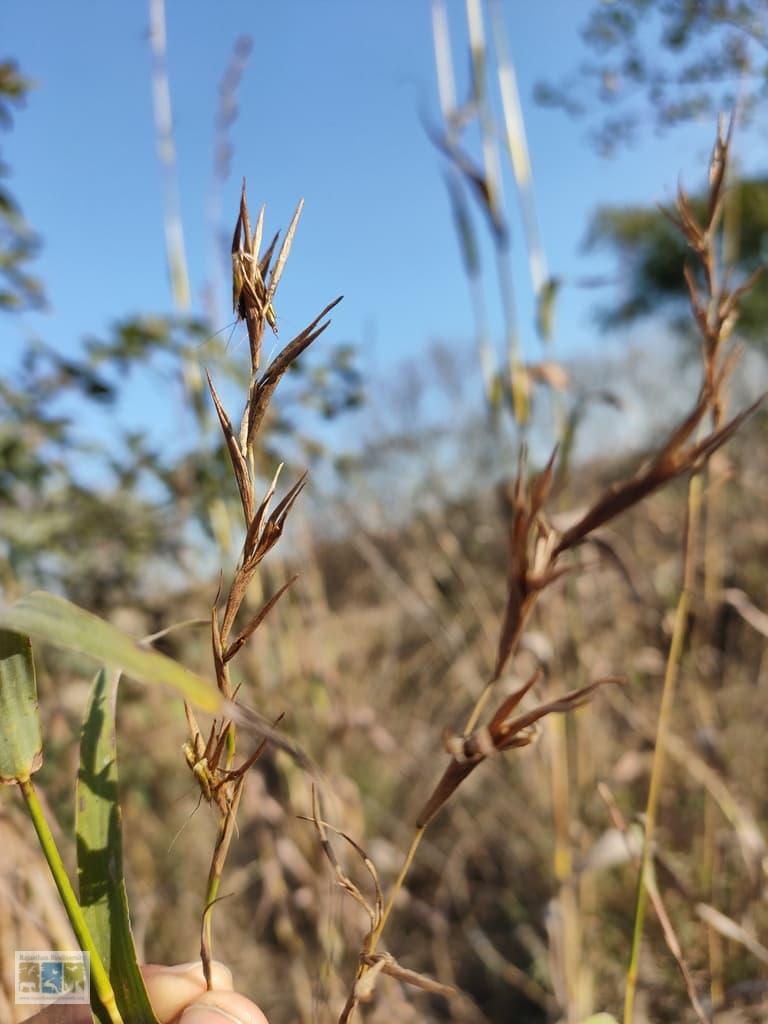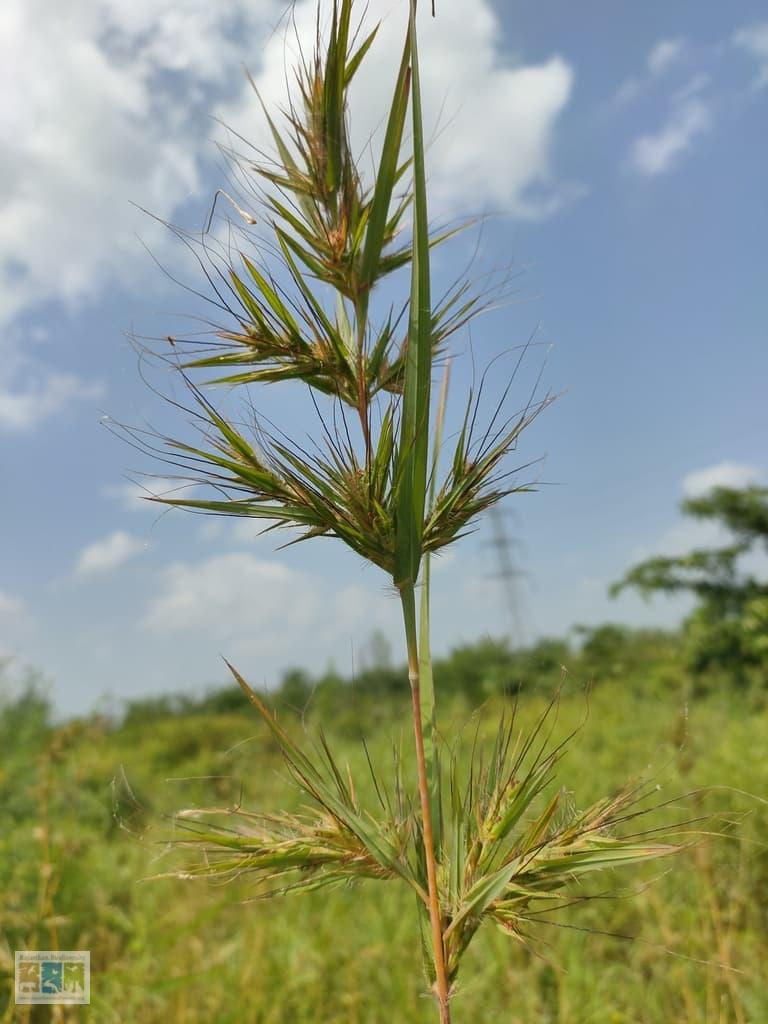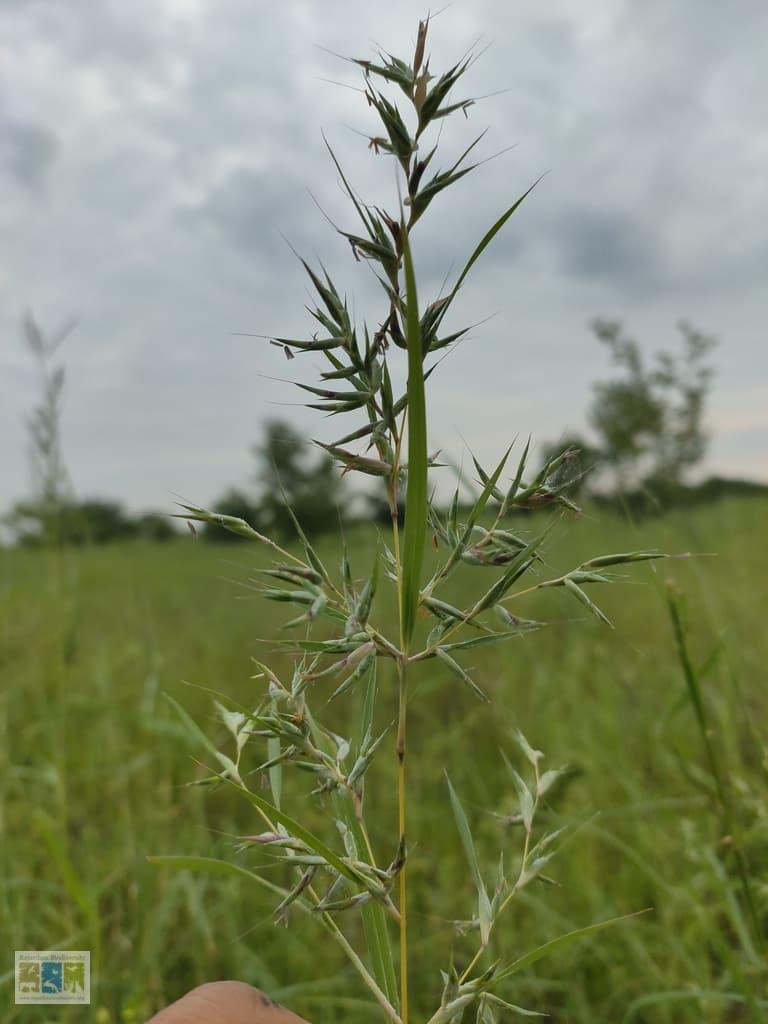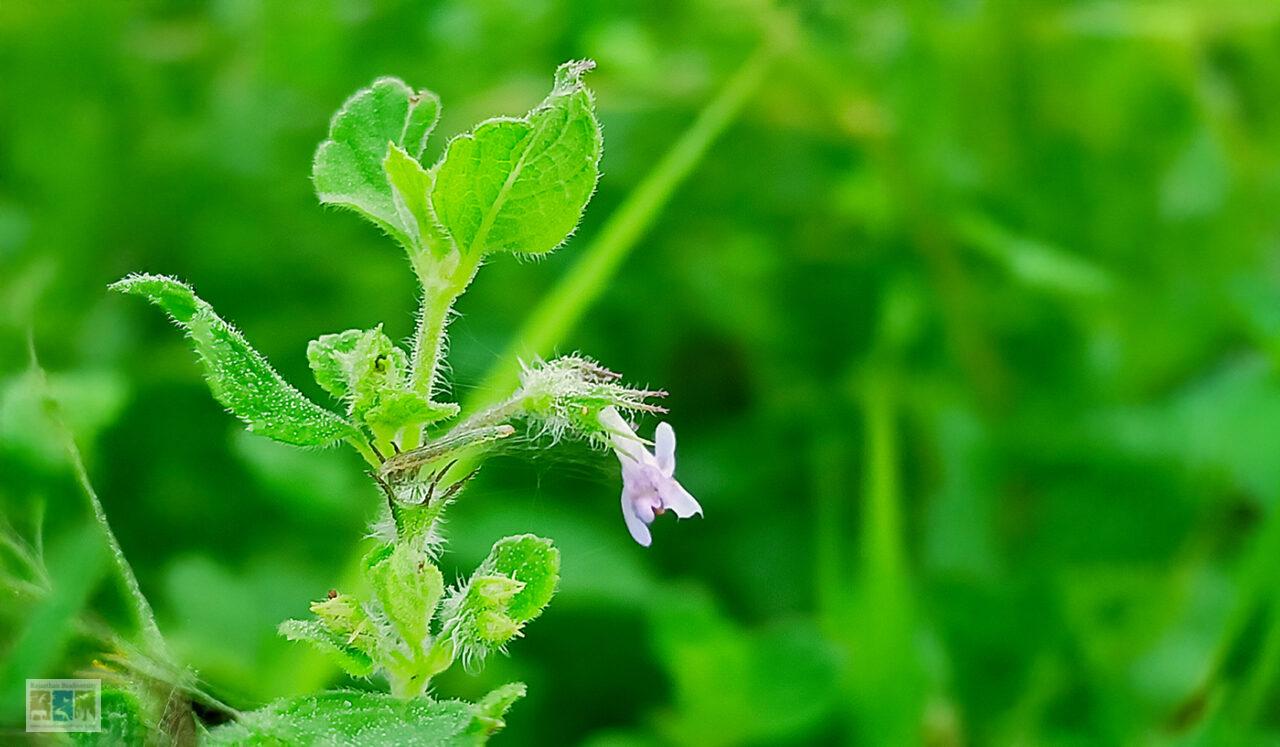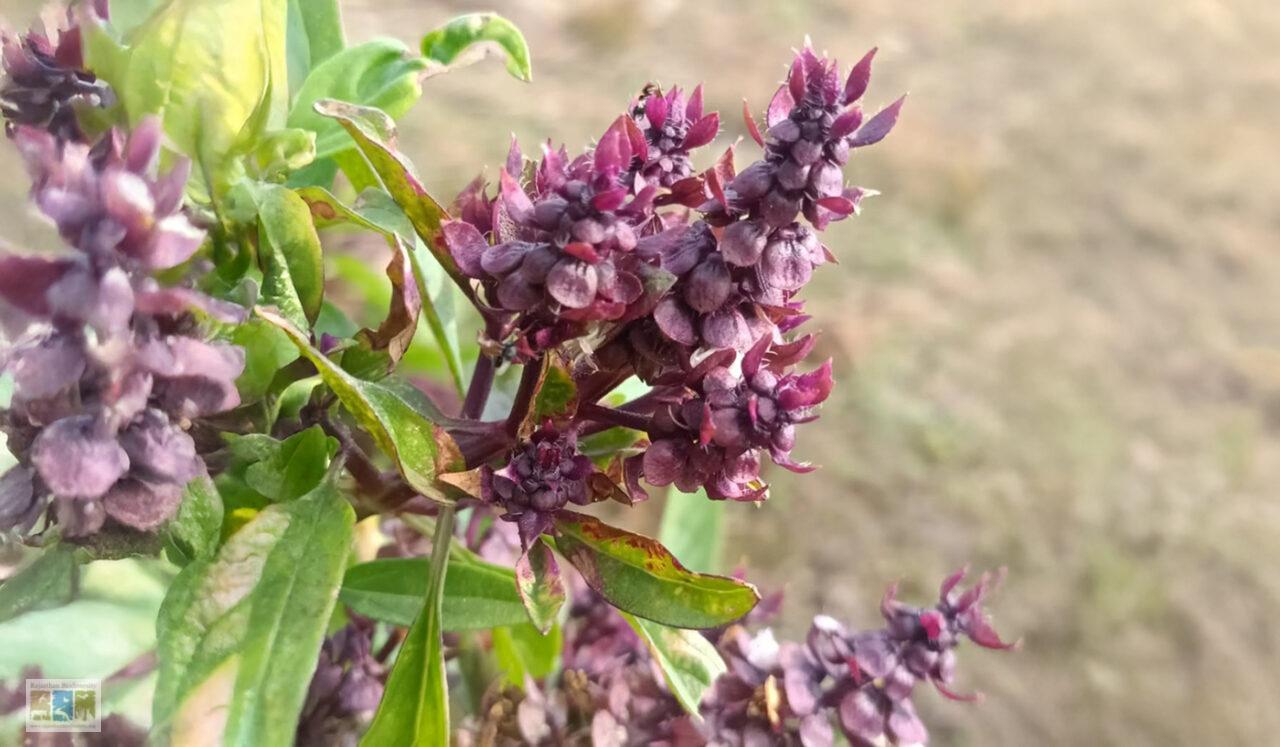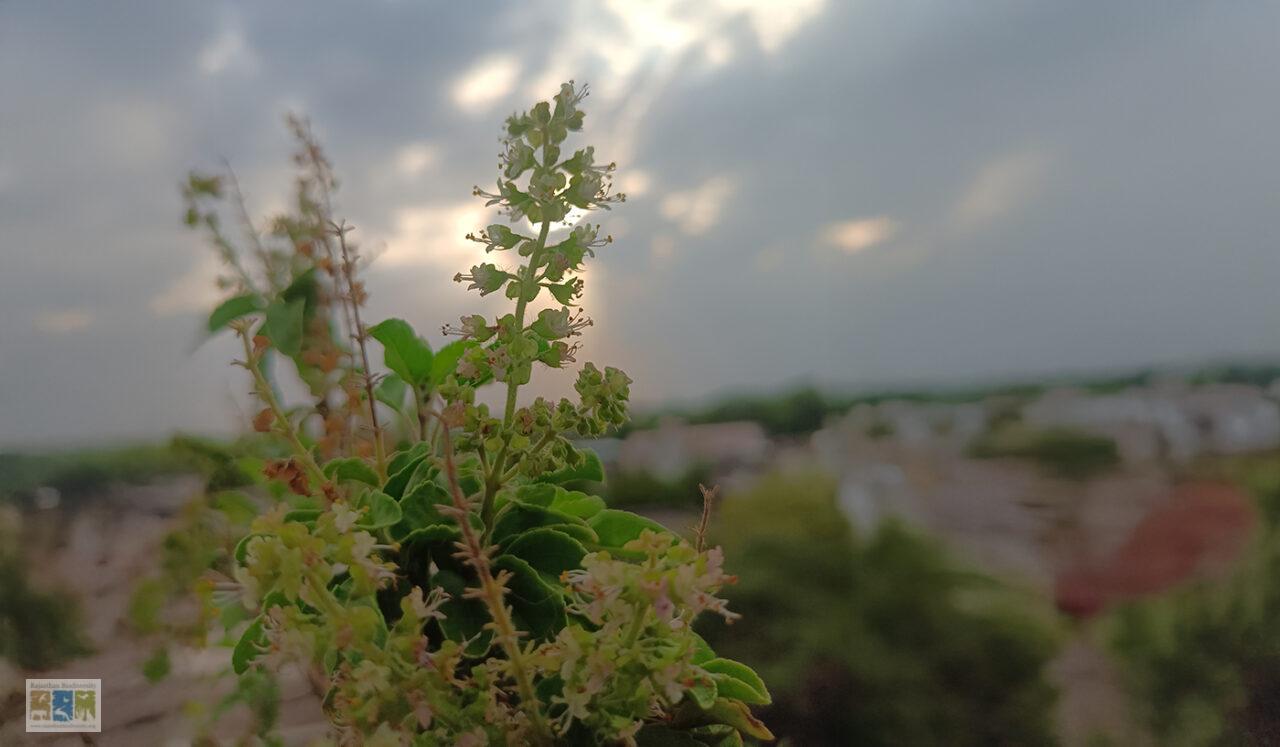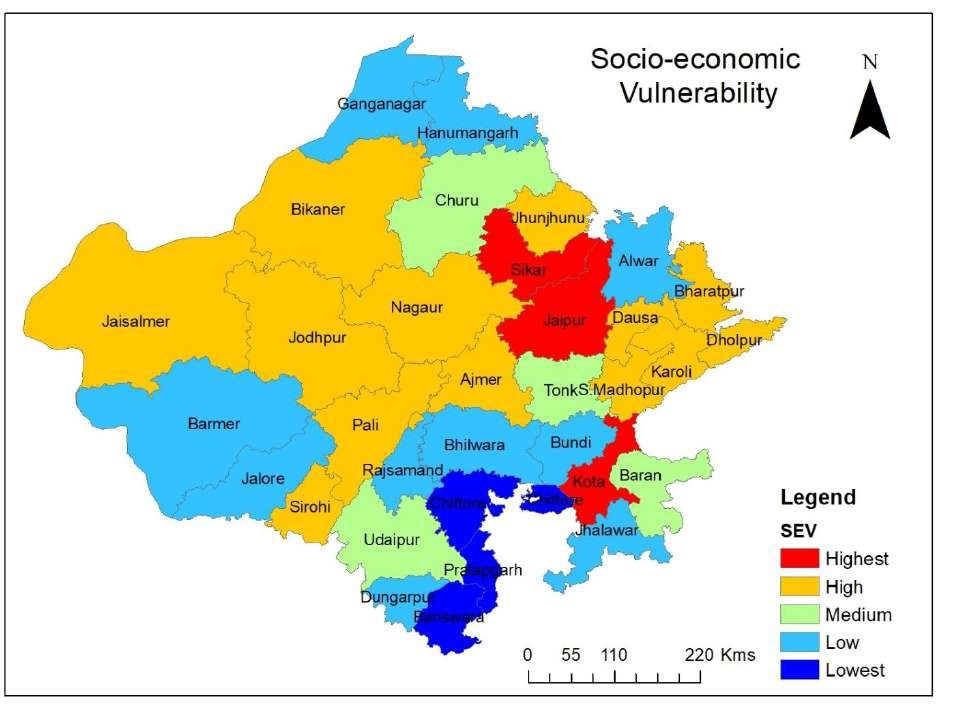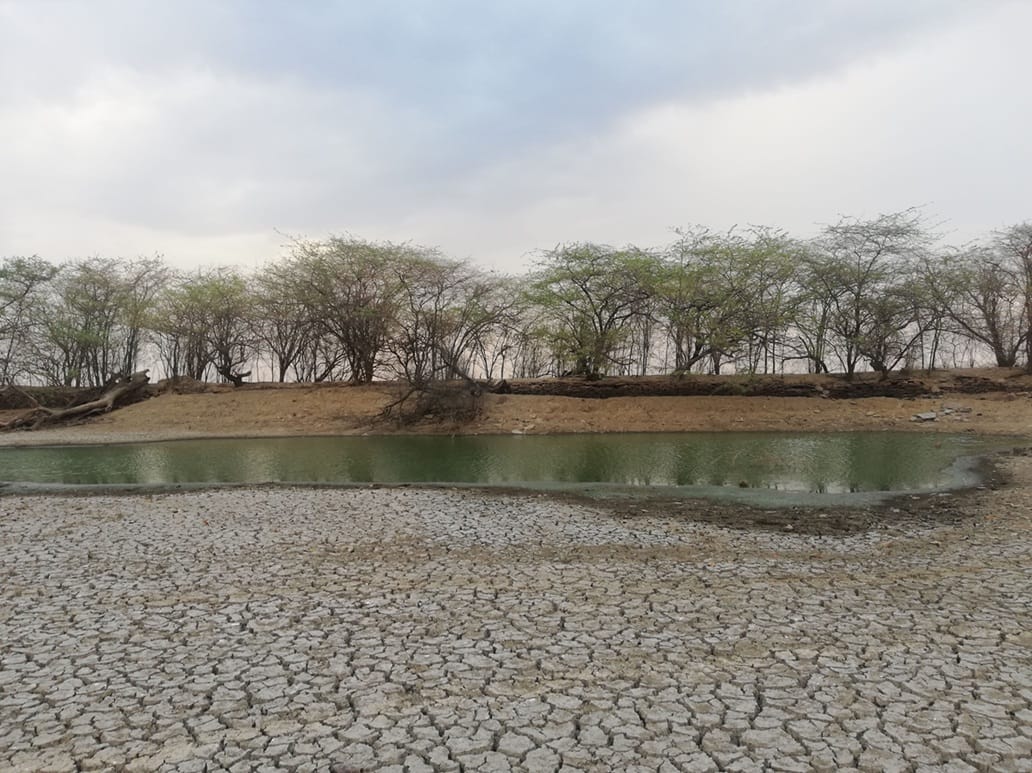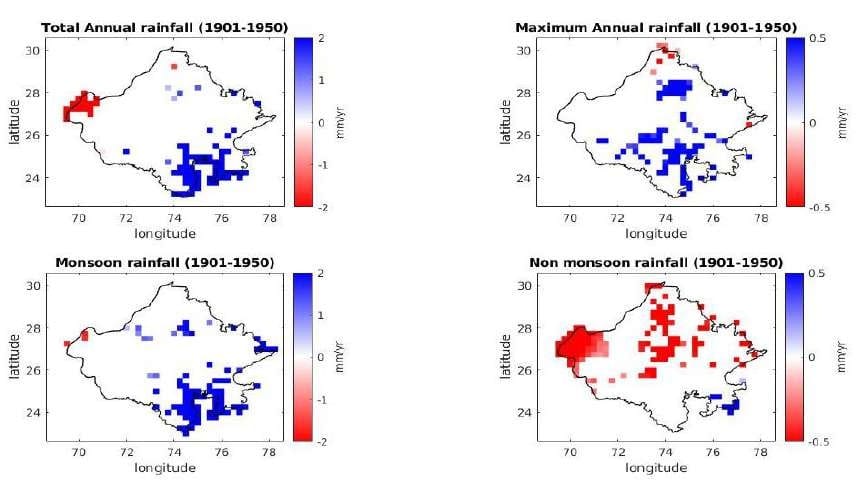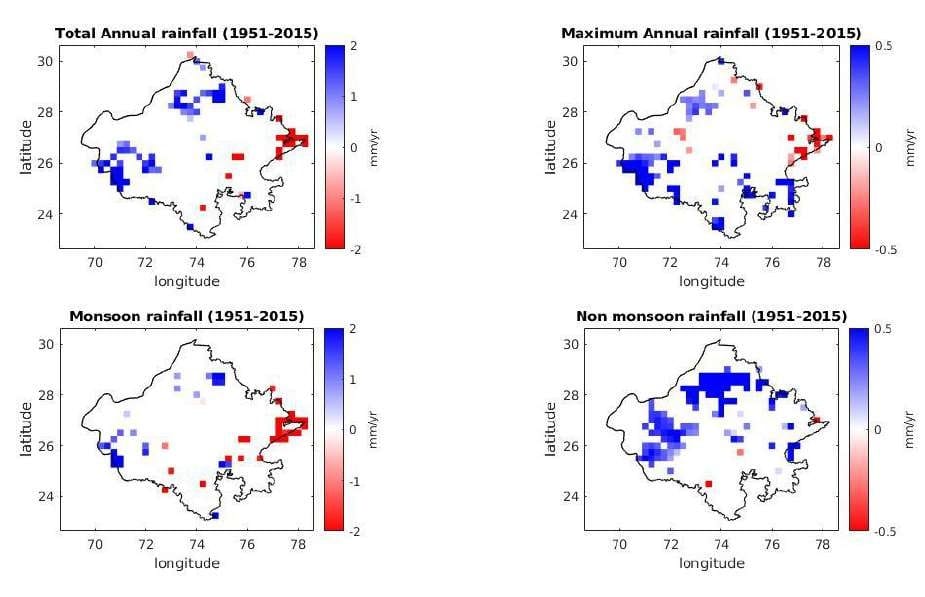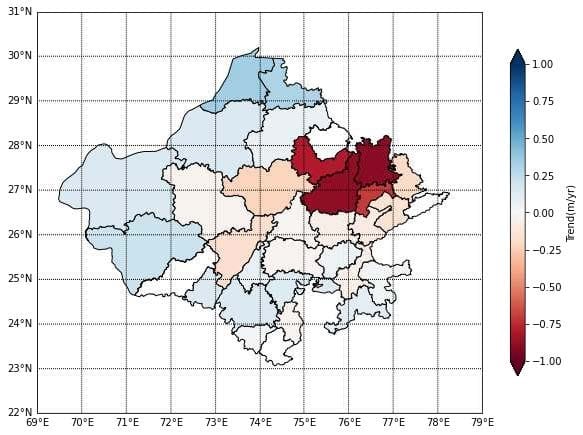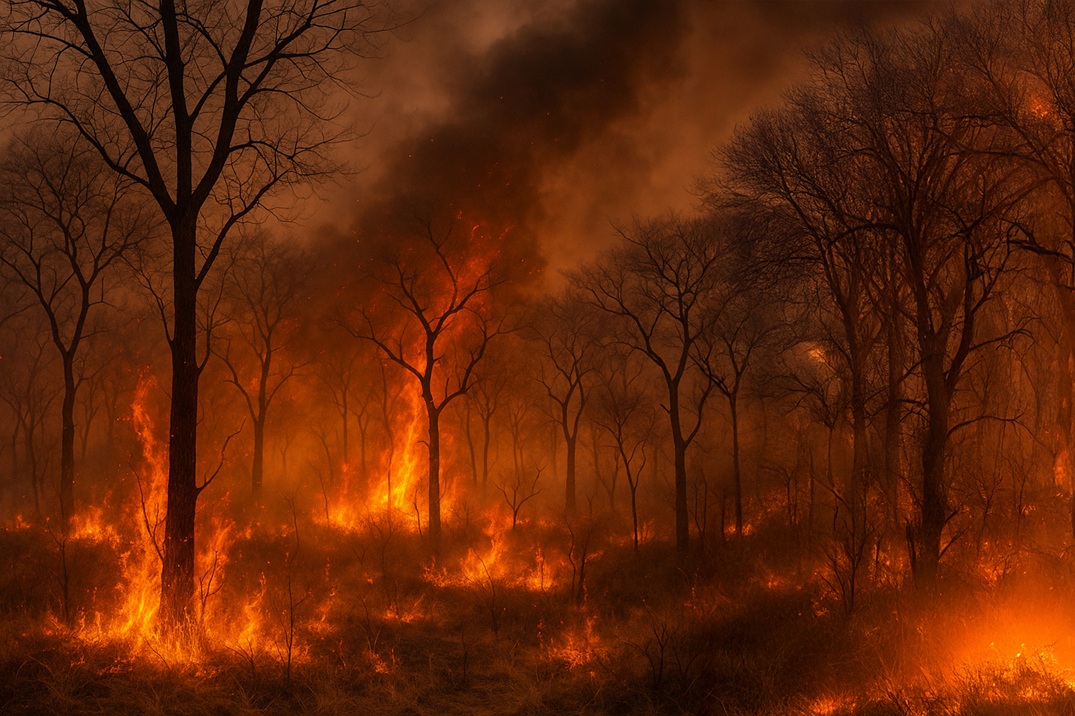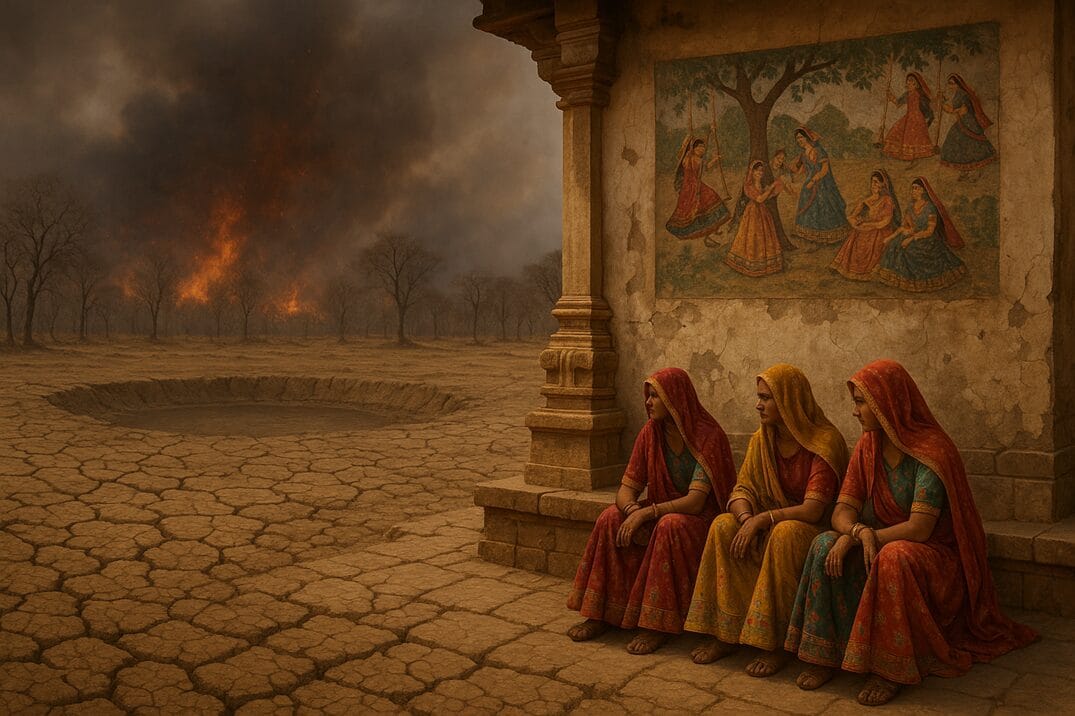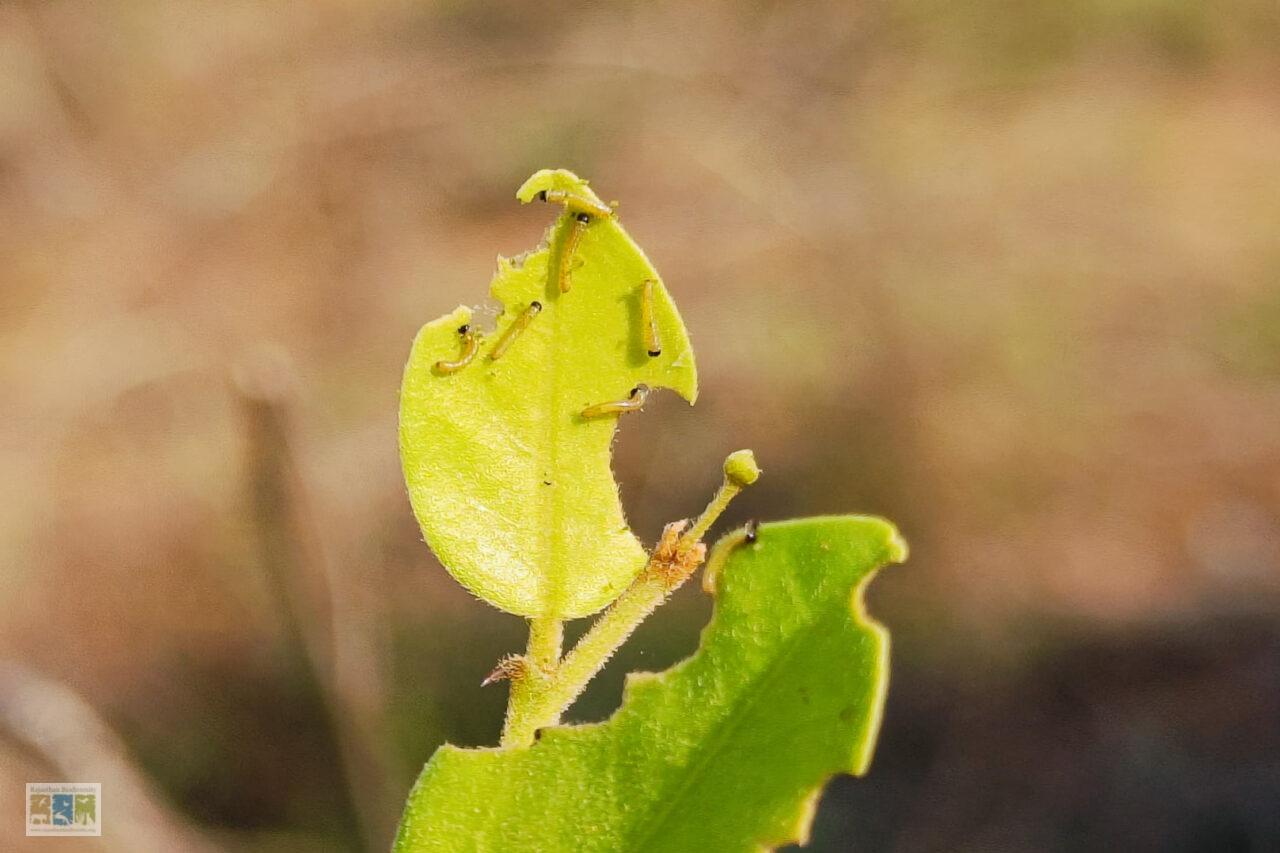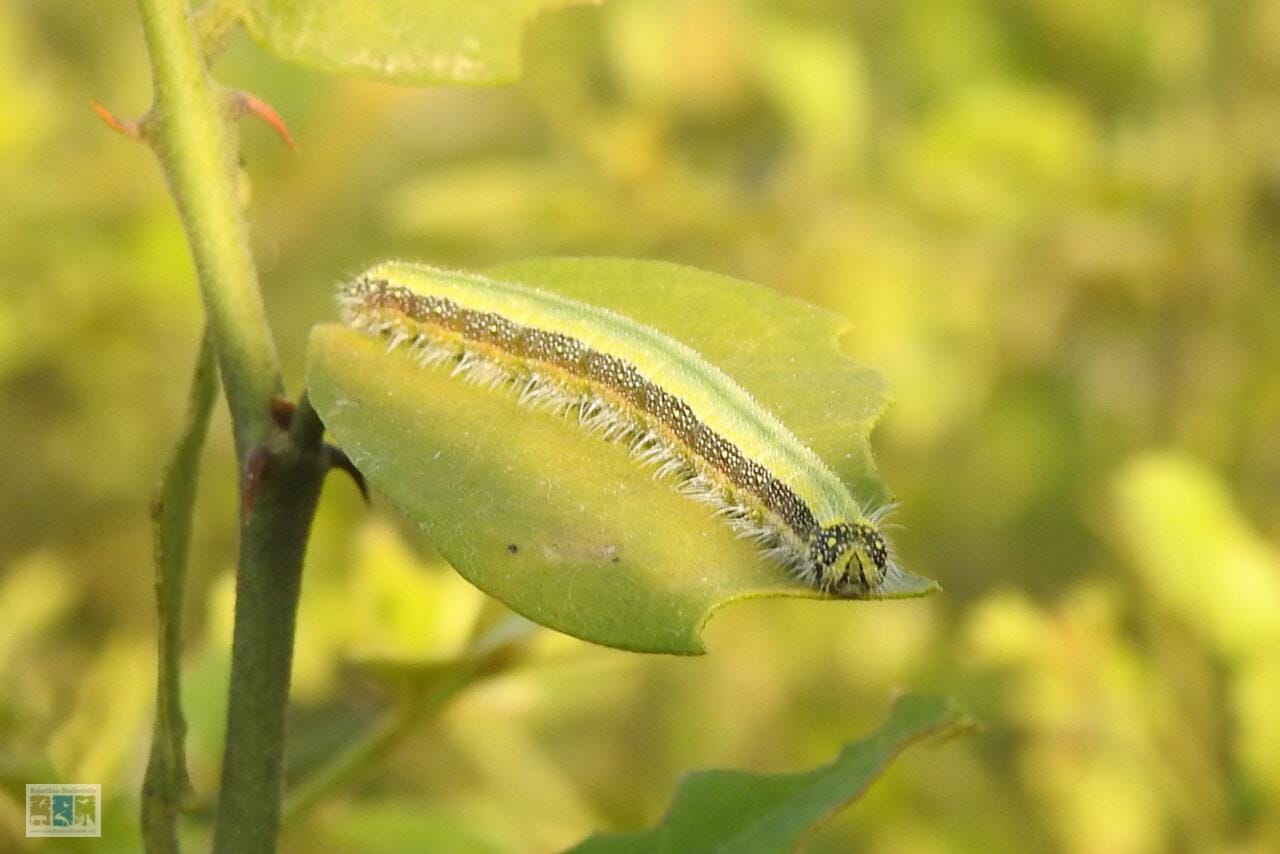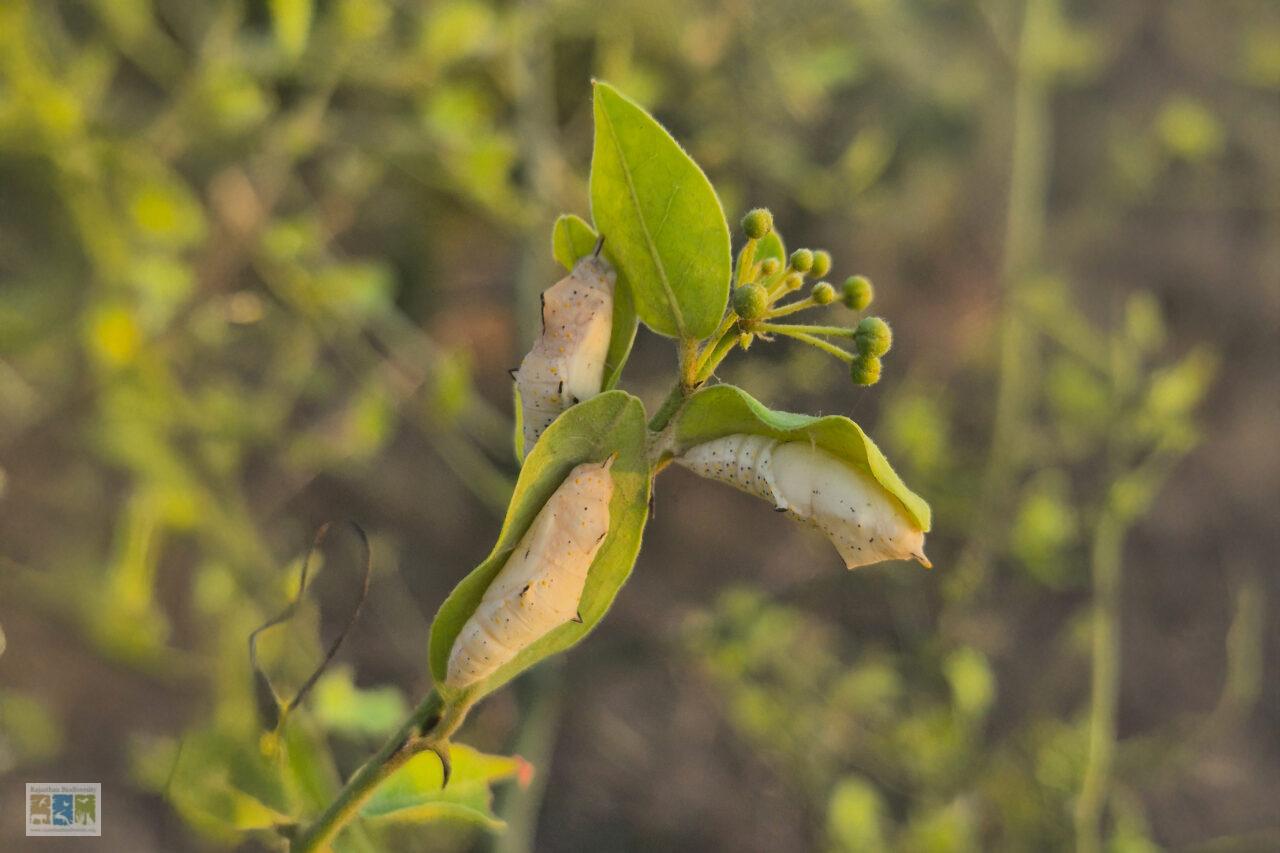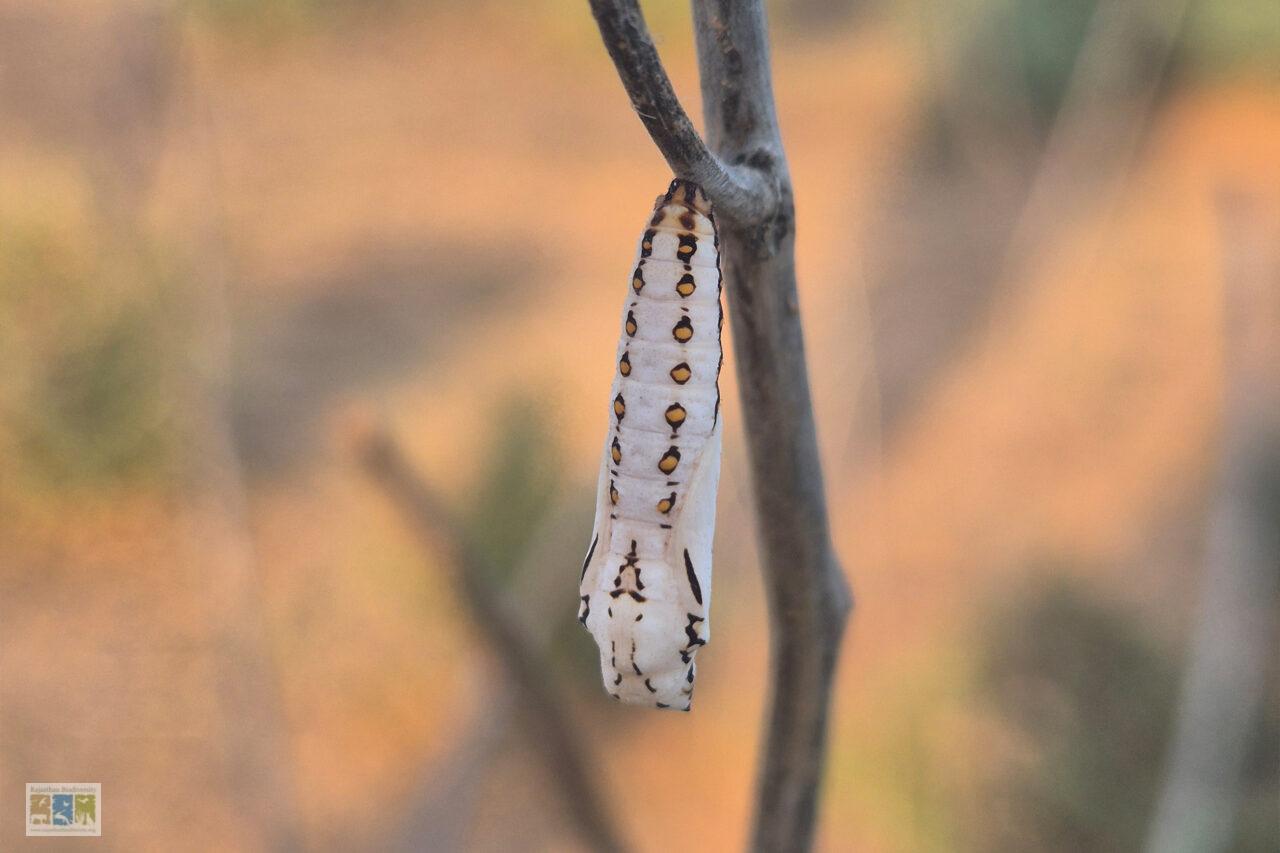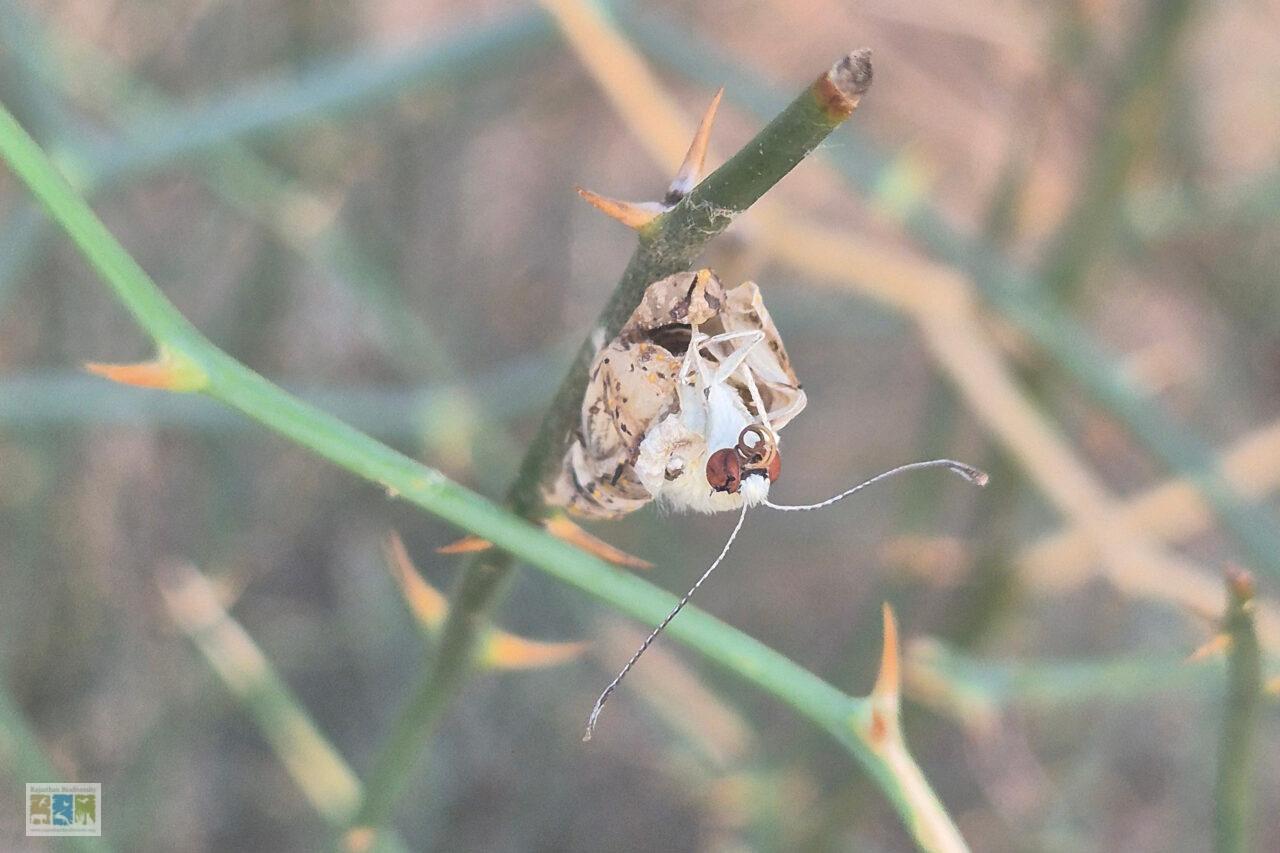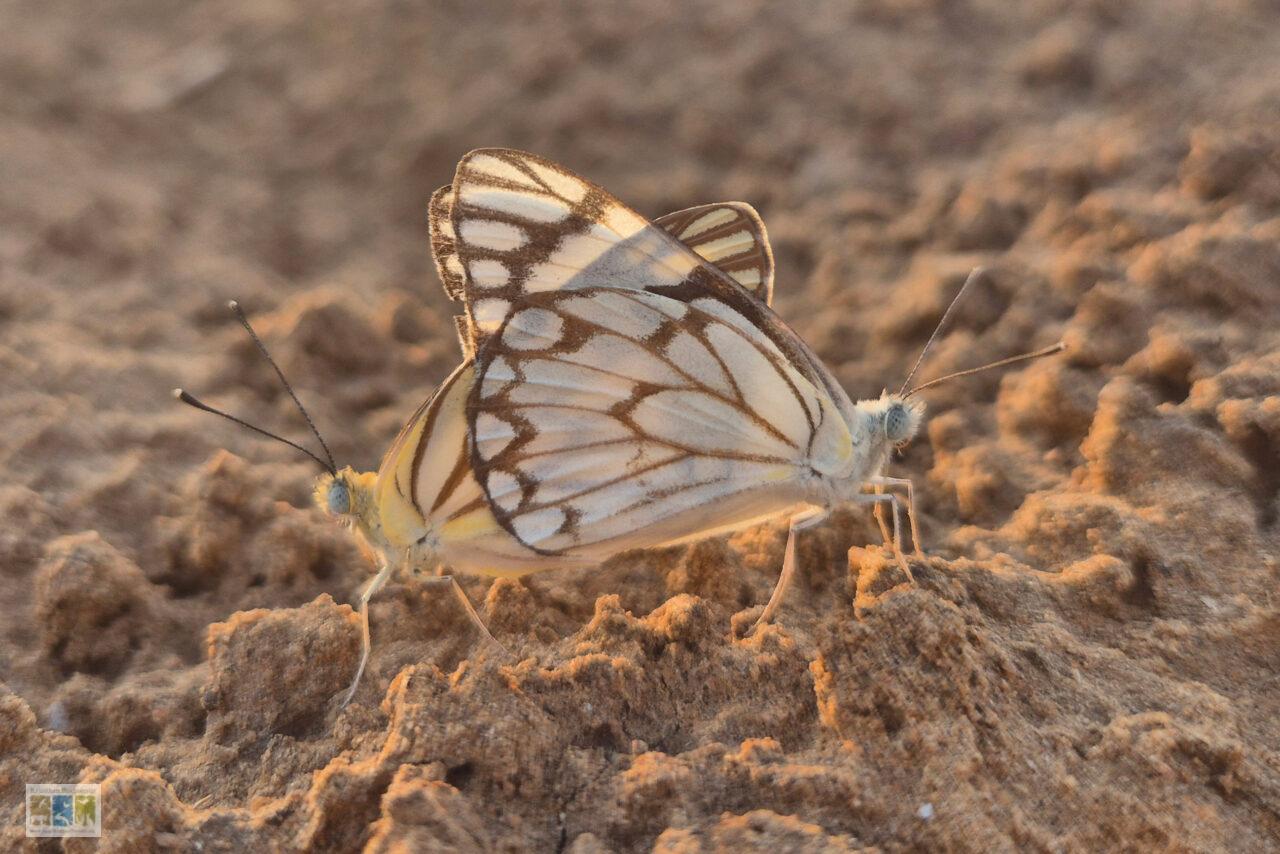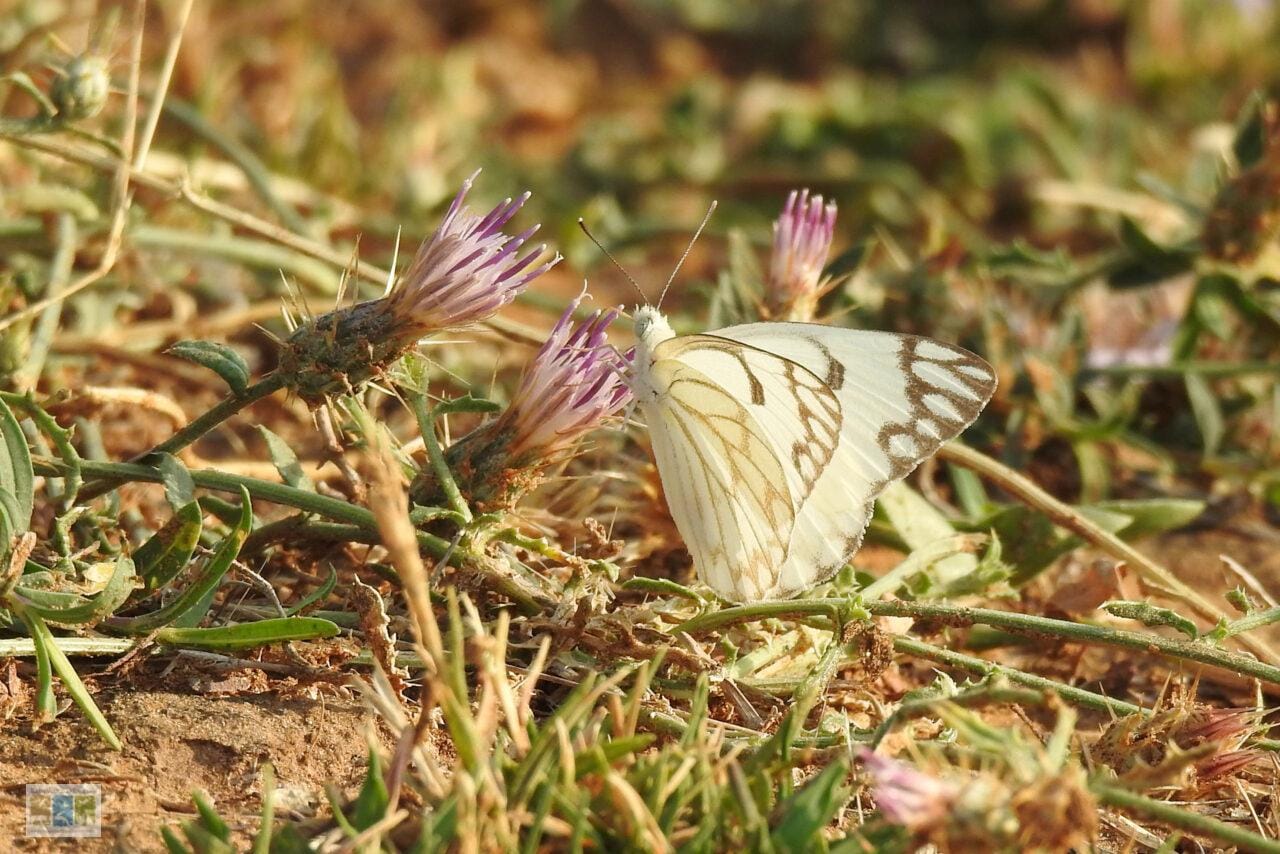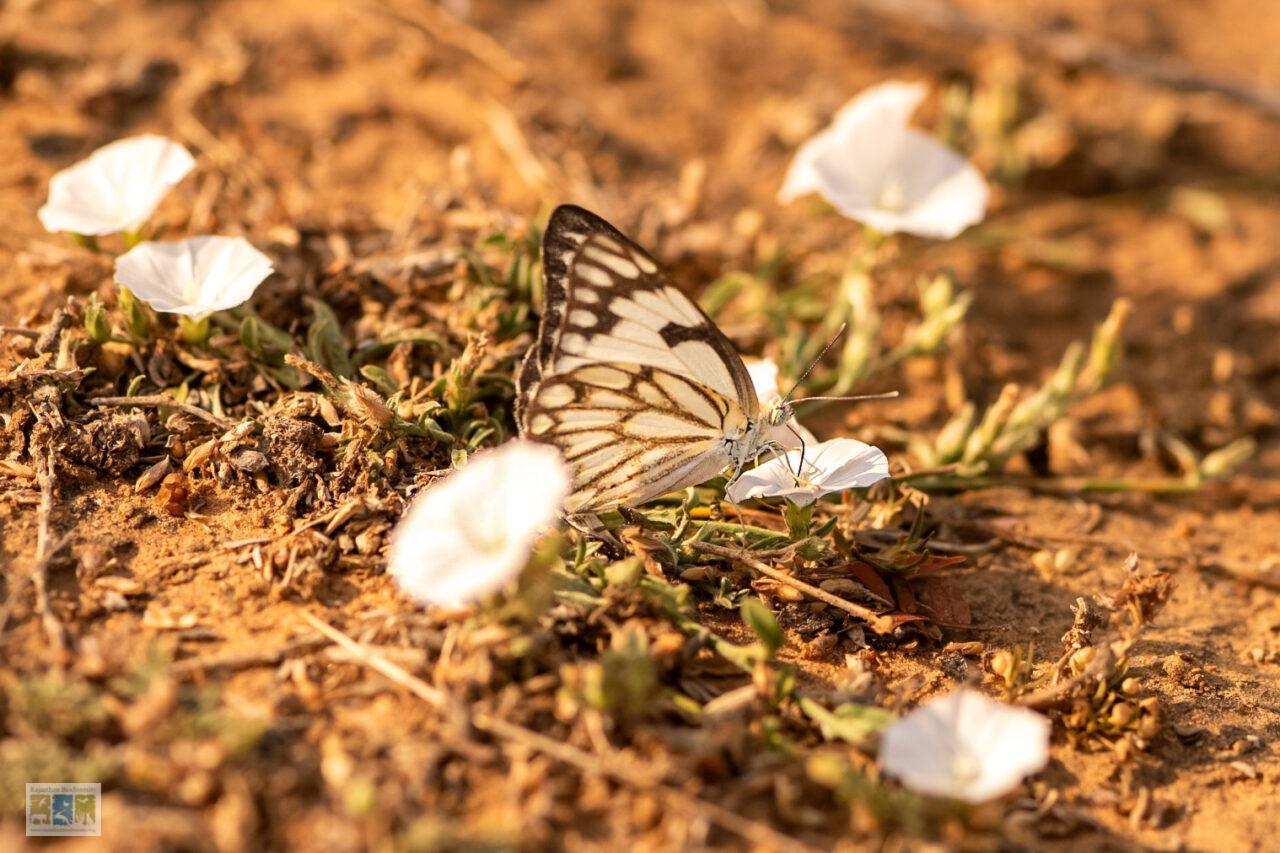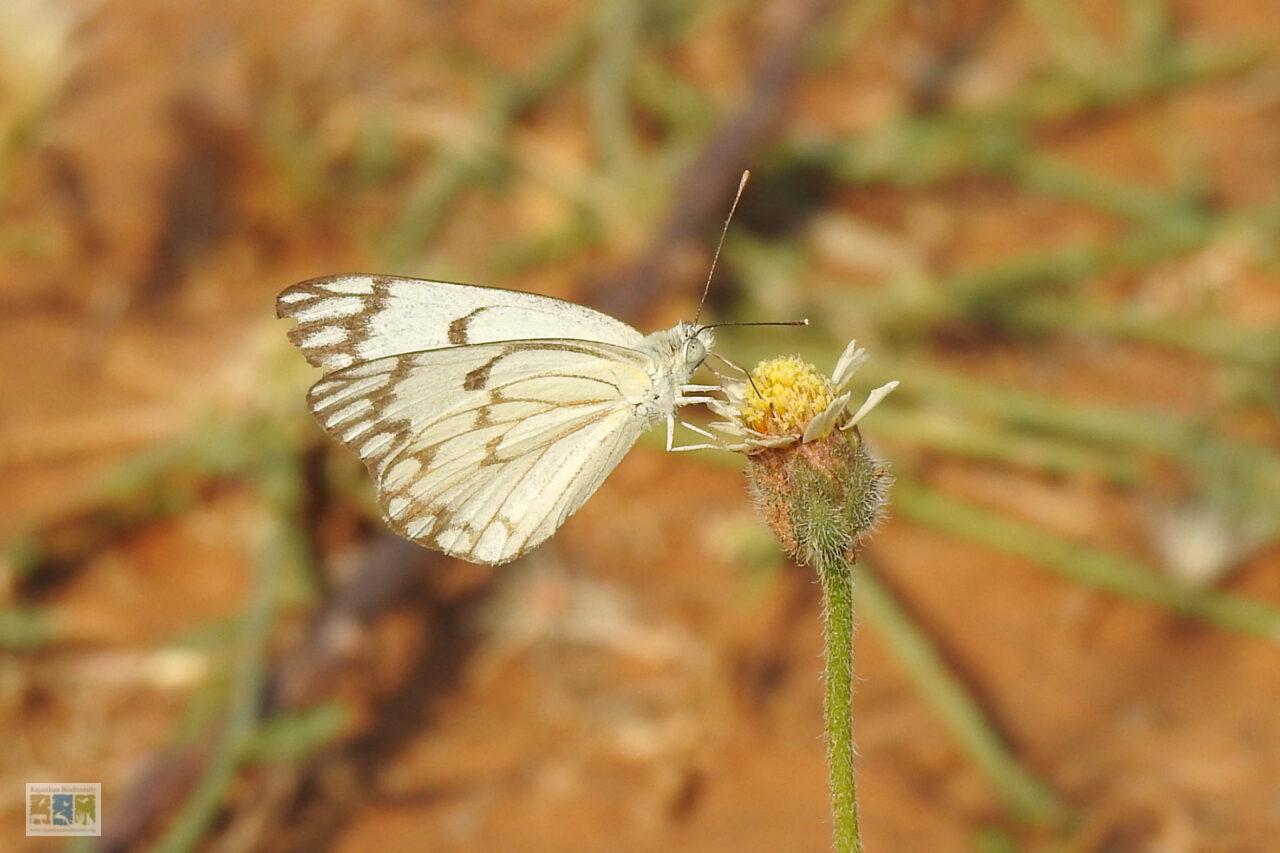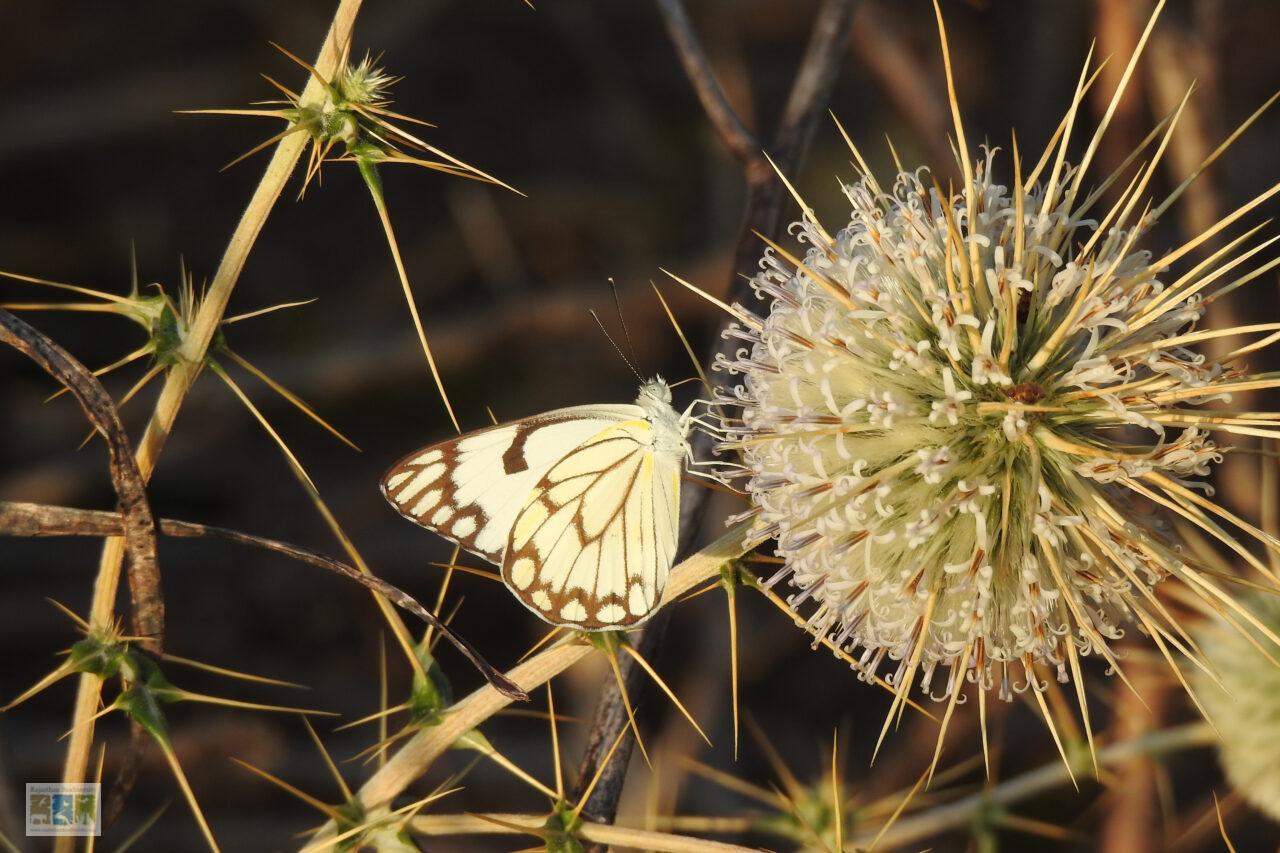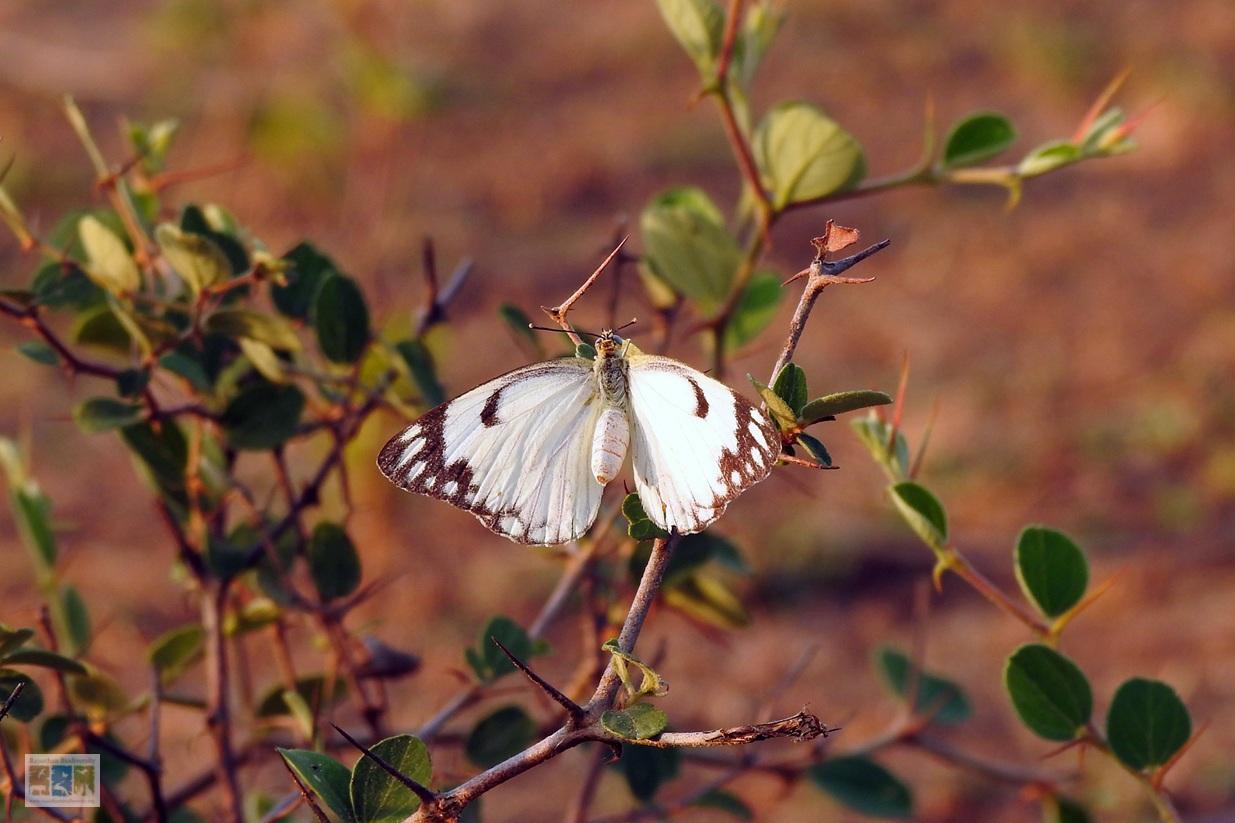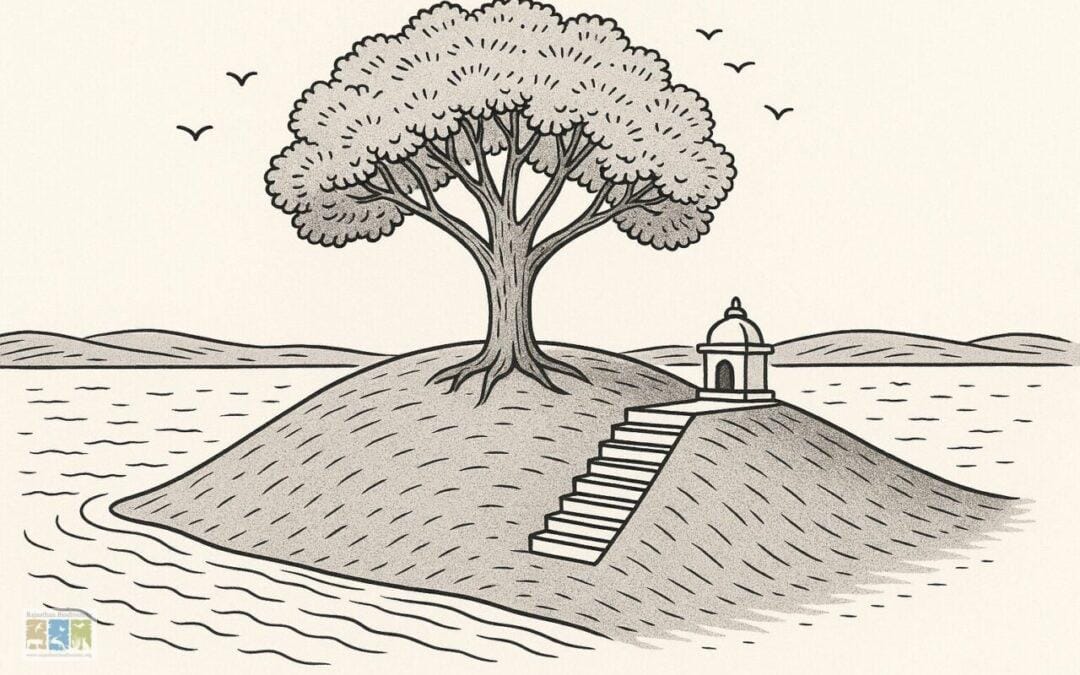
कदम तालाब
देश के ग्रामीण अंचलों में जगह-जगह तालाब (जोहड) मिलते हैं जिनका आर्थिक, धार्मिक, सांस्कृतिक महत्व तो है ही उनका पारिस्थतिकीय महत्व भी कम नहीं है। इन ग्रामीण तालाबों का कैचमेन्ट आस -पास का क्षेत्र होता है तो कई बार कैचमेन्ट जलाशय से काफी दूर भी स्थित होता है। ऐसी स्थिति में दूरस्थ कैचमेन्ट को जलाशय से कोई न कोई नाला जोड़ने का काम करता है। आस-पास के कैचमेन्ट वाले जलाशयों का पानी प्रायः सभी दिशाओं से बहता हुआ जलाशय में पहुँच कर जमा होता रहता है लेकिन दूरस्थ कैचमेन्ट की स्थिति में कैचमेन्ट का जल नाले के रास्ते से बहता हुआ जलाशय में पहुँचता है। (चित्र 1.1 एवं 1.2)
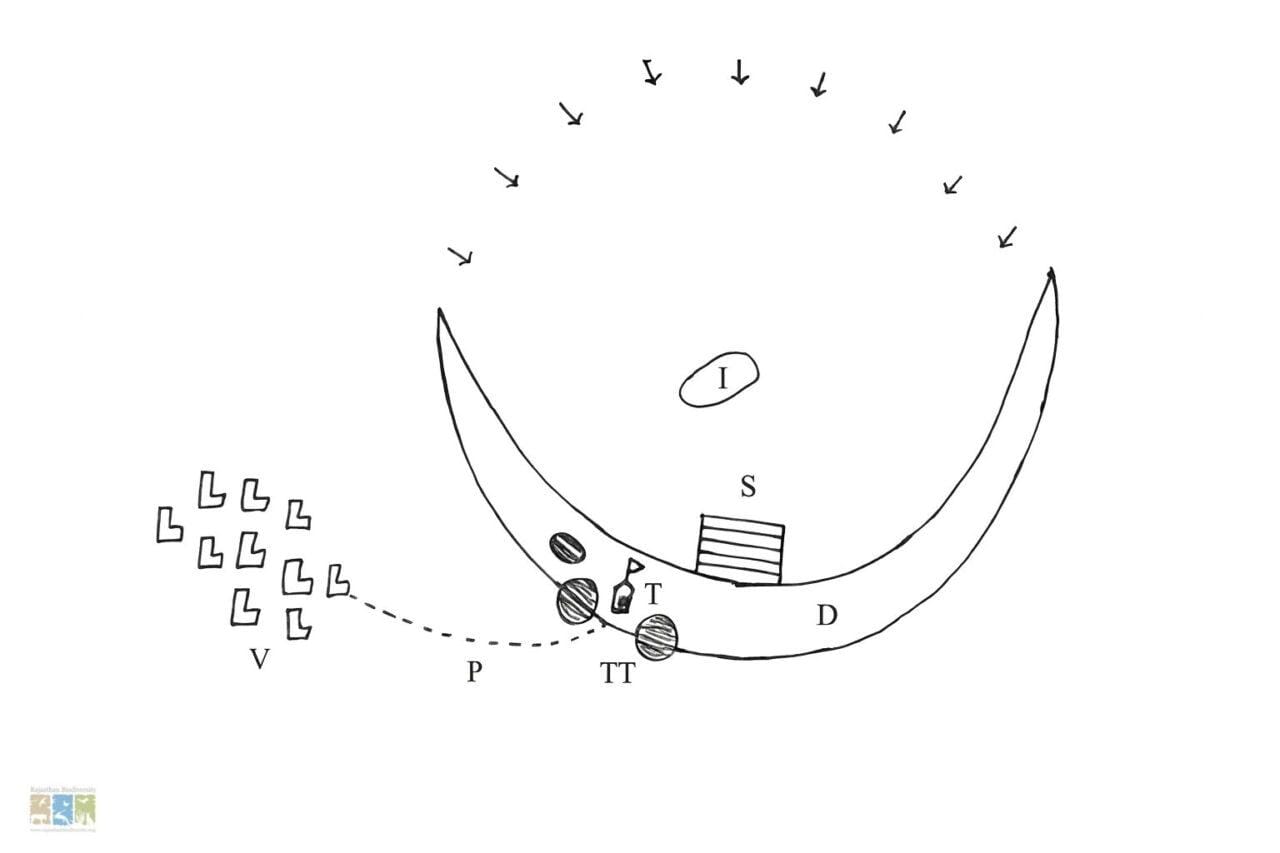
चित्र 1.1: स्थानीय कैचमेन्ट युक्त तालाब
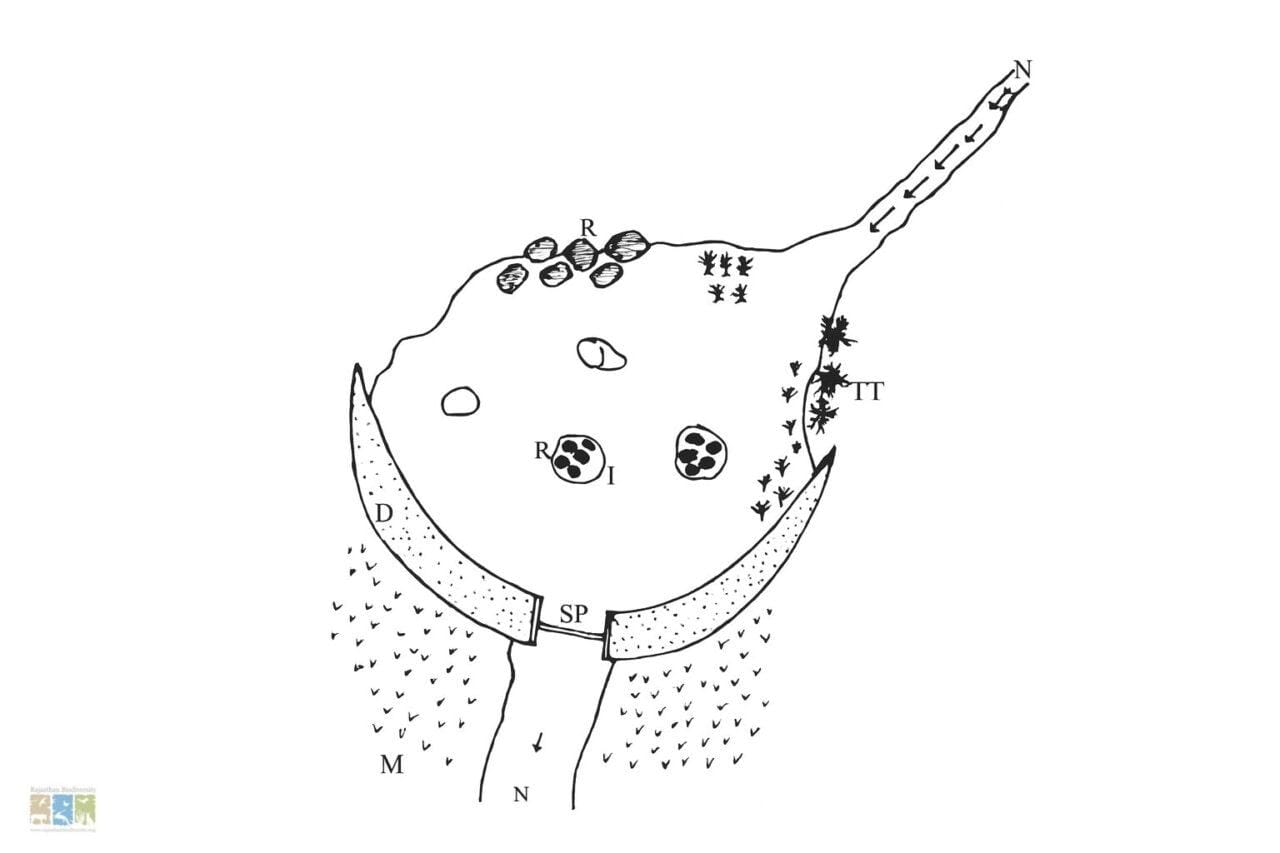
चित्र 1.2: एक तालाब, दूर स्थित कैचमेन्ट से, नाले से जुड़ा हुआ।
नोट: (S=सीढी/घाट, T=धार्मिक स्थल, I=द्वीप, V= गाँव, P= रास्ता, SP= अतिरिक्त जल निकासी हेतु ओटा, N= नाला, TT= वनस्पतियां, R=चट्टानों के टुकडे, D= पाल/तट बन्ध, M=मार्सी क्षेत्र)
गाँव के तालाबों के पानी को रोके रखने हेतु उन पर ढाल की तरफ अर्धचंद्राकार या गोलाकार मिट्टी के तटबन्ध बनाये जाते हैं जिन्हें स्थानीय भाषा में ’पाल’ (embankment) कहा जाता हैं। पाल पर कई बार तरह – तरह के वृक्ष भी लगाए जाते हैं या अपने आप उग आते हैं जिन्हें पाल वृक्ष (embankment trees) कहा जाता है।
तालाबों, एनीकटों व बांधो के मिट्टी की बनी पाल या तटबन्धों पर कोई देव स्थान, नहाने के घाट, उतरने-चढ़ने की सीढ़ियाँ, खुर्रे या रपट, ओटा (spill over) आदि विद्यमान हो सकते हैं। पाल वृक्ष, पाल की मिट्टी को बाँध कर रखते हैं तथा बहते वर्षा जल व हवा से उसे कटने से बचाते हैं एवं तटबन्ध को सुरक्षा प्रदान करते हैं। पाल वृक्षों की वजह से तालाबों की सुन्दरता तो बढती ही है उनकी छाया में पालतू व वन्य पशु तथा मनुष्य विश्राम करते हैं। पाल वृक्षों से चारा, फल, फूल, शहद, गौंद, ईंधन, आदि लघु वन उपज भी मिलते हैं। पाल वृक्षों पर तरह – तरह के पक्षी, लंगूर, बंदर, गिलहरी, गिरगिट, बागल, बिज्जू (civet) आदि बसेरा करते हैं एंव प्रजनन भी करते हैं। पाल वृक्ष के कोटरों में उल्लू, बसंता, मैना, टिट आदि पक्षी प्रजनन से लेकर रात्रि विश्राम करते हैं।
ग्रामीण क्षेत्रों में मेलों व धार्मिक अनुष्ठानों का आयोजन प्रायः तालाबों के पास होता है एवं इन कार्यों हेतु पाल वृक्ष बहुत काम आते हैं। गाँव के बच्चों द्वारा वृक्षों पर झूले डाले जाते हैं। वन क्षेत्रों से दूर ये तालाब एक अच्छे “वाटर होल” (water hole) की भूमिका भी निभाते हैं तथा वनों से दूर खेतों, पडत, बंजर व चारागाहों में रहने वाले वन्यप्राणी यहां पानी पीने आते हैं। कई बार पाल वृक्षों पर बागलों (Flying Fox-Pteropus gigenticus) की कॉलोनियां पाई जाती हैं। बागल भूमि पर उतर कर पानी नहीं पी सकती बल्कि वे उडते हुए ही पानी पीती हैं इसलिये उनको बडा व खुला जलाशय ही रास आता है। ये बागल परागण व प्रकीर्णन का कार्य कर प्रकृति में सकारात्मक भूमिका निभाती हैं।
पाल वृक्षों की विशेषतायें व सही प्रजातियों का रोपण हेतु चयन:
“पाल” वस्तुतः एक बड़ा मिट्टी का डौला (Bund or mound) है जिस पर मिट्टी का कटाव चलता रहता है। अतः पाल पर उगे वृक्ष की जडें भूमि क्षरण की वजह से आने वाले वर्षों में आंशिक रूप से नंगी हो जाती हैं तथा दिखने लग जाती हैं। समय-समय पर ग्रामीण अपने श्रम से या किसी सरकारी योजना अन्तर्गत तालाब को गहरा करने हेतु, मिट्टी खोद कर पाल पर डालते हैं जिससे न केवल जडें बल्कि तने पर भी एक ऊँचाई तक मिट्टी चढा दी जाती है। मिट्टी की कमी व मिट्टी की अधिकता को फाइकस वंश (Genus Ficus) अच्छी तरह सहन कर सकता है। इस लिहाज से पीपल (Ficus religiosa), बरगद (Ficus benghalensis), गूलर (Ficus recemosa), पाखड (Ficus virens), पिपरानी (Ficus lambertiana), पलक या पिंपरी (Ficus amplecema), करंज (Pongamia pinnata) आदि पाल हेतु अधिक उपयुक्त प्रजातियां है एवं प्राय इनका रोपण भी काफी किया जाता है। कई जगह नीम, इमली, आम, देशी बबूल, रायण, महुआ, जामुन, खेजडी, इन्द्रधोक (Anogeissus sericea nummularia) आदि भी पाल पर रोपित किये जाते हैं या सुरक्षित रखे जाते हैं।
कदम – तालाब
धार्मिक एवं सांस्कृतिक कार्य हेतु कई बार ग्रामीणजन अपने गाँव के जलाशय की पाल पर न्यूनतम एक कदम (Mitragyna parvifolia) का पौधा भी लगाते हैं जो कालांतर में वृक्ष के रूप में पनप जाते हैं (चित्र 2.1 से 2.4)। कई बार एक से अधिक कदम वृक्षों को भी पनपाया जाता है। एक बार रोपण से तैयार होने पर गिरने वाले बीजों से नए कदम भी अपने आप पनपते रहते हैं। जिन तालाबों पर कदम प्रजाति का एक या अधिक वृक्ष “पाल वृक्ष” के रूप में विद्यमान हो उस तालाब को “कदम – तालाब” या “कदमा तालाब” कहा जाता है। पूर्वी राजस्थान में जगह – जगह कदम – तालाब देखने को मिलते हैं। अलवर जिले में मुण्डावर-बहरोड क्षेत्र में हुलमाणा कलाँ, गादली की ढाणी, बीजवाड चैहान, फौलादपुर, काँटी खेडी आदि गाँवों के कदम तालाब उल्लेखनीय हैं। पूर्वी राजस्थान के इस क्षेत्र से सटे व निरंतरता आगे तक हरियाणा राज्य के रेवाडी, झज्जर आदि जिलों के विभिन्न गाँवों में भी कदम तालाब देखने को मिलते हैं। कदम तालाबों में स्थानीय ग्राम एवं आस-पास के अन्य ग्राम जहाँ कदम तालाब उपस्थित नहीं है वहाँ की महिलाएं विभिन्न धार्मिक एवं सांस्कृतिक कार्यक्रम श्रावण मास में कदम वृक्ष के नीचे संपन्न करती हैं। कई तरह के उपवासों में खाना घर से बनाकर महिलाएं गीत गाते हुए कदम तालाब पर पहुँचती हैं तथा कदम वृक्ष के नीचे बैठकर सामूहिक भोज कर उपवास खोलती हैं। यह परंपरा सदियों से चली आ रही है।

चित्र 2.1: मित्रागायना पार्वीफोलिया: वर्षा काल में

चित्र 2.2: मित्रागायना पार्वीफोलिया: पतझड काल में

चित्र 2.3: मित्रागायना पार्वीफोलिया: पुष्प काल क्लोजअप
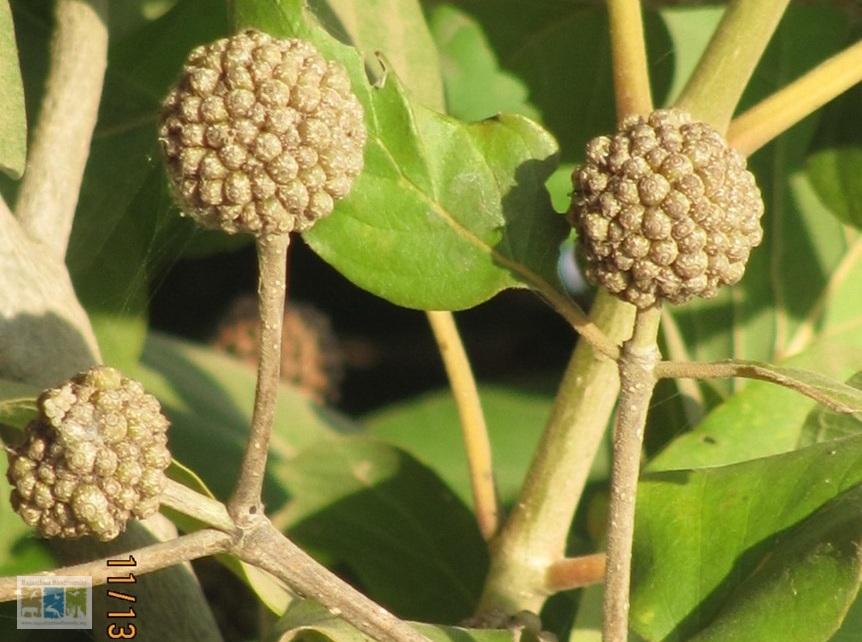
चित्र 2.4: मित्रागायना पार्वीफोलिया: पुष्प मुण्ड क्लोजअप
कदम कुण्ड
कदम तालाब की तरह सामान्य कुण्डों के मुकाबले कदम कुण्ड भी धार्मिक एवं सांस्कृतिक गतिविधियों हेतु विशेष महत्व रखते हैं। पहाड़ों में जगह-जगह खोखले गड्ढेनुमा या गुफानुमा स्थान मिलते हैं जिन्हें “कुण्ड” कहा जाता है। कुण्डों में वर्ष प्रान्त या वर्षाकाल एवं सर्दी के मौसम में पानी विद्यमान रहता है। अजमेर जिले में पुष्कर में पास पंचकुण्ड, अलवर जिले में रेणागिरि गाँव के पास परशुराम कुण्ड, बडा बेरा कुण्ड, हनुमान कुण्ड; झुंझुनू जिले में लोहार्गल कुण्ड, चिराणा गाँव के “ताताकुण्ड” व “ठण्डाकुण्ड” आदि प्रसिद्ध हैं। यदि किसी कुण्ड के पास कदम (Mitragyna parvifolia) का वृक्ष उगा हो तो उसे “कदम कुण्ड” कहा जाता है। सीकर जिले में नीम का थाना कस्बे के पास छापोली गाँव में एक कदम कुण्ड बहुत प्रसिद्ध है। स्थानीय जनों द्वारा सामान्य कुंडों की तुलना में कदम कुण्ड में धार्मिक अनुष्ठान करने को प्राथमिकता दी जाती है। ऐसे कुण्डों में विशेष रूप से श्रद्धालु स्नान करने को प्राथमिकता देते हैं जिनके पास कदम वृक्ष विद्यमान हो।
कदम रोपण
कदम या कदम्ब के नाम से दो वृक्ष प्रजातियां, मित्रागायना पार्वीफोलिया (Mitragyna parvifolia) (चित्र 2.1 से 2.4) तथा नियोलैमार्किया कदंबा (Neolamarckia cadamba) (चित्र 3.1 से 3.3) ज्ञात हैं। मित्रागायना पार्वीफोलिया जिसे कलम नाम से भी जाना जाता है, लेकिन बोल- चाल में ‘कदम’ नाम ही अधिक प्रचलित हैं। प्राकृतिक रूप से यह प्रजाति राजस्थान के पहाड़ी वनों में जगह-जगह देखने को मिलता है जबकि नियोलैमार्किया कदंबा प्राकृतिक रूप से राजस्थान में नहीं पाया जाता। यह प्रजाति जहाँ भी राजस्थान में देखने को मिलती है किसी न किसी व्यक्ति या संस्था द्वारा रोपित की गई होती है। मित्रागायना पार्वीफोलिया सामान्यता पहाड़ों से दूर नहीं मिलती। प्राचीन समय में पौधशालाओं का भी अभाव था अतः पुराने समय में ग्रामीण लोग पहाडी वन क्षेत्र से वर्षा ऋतु में प्राकृतिक रूप से उगे कदम के छोटे पौधों को मिट्टी के पिण्ड सहित खोद कर लाते थे तथा अपने गाँव के तालाब की पाल पर रोपित करते थे एवं समय-समय पर पानी पिलाकर उसे बडा होने देते थे। इस दौरान बाडबन्दी कर उसे गाँव के पशुओं से चराई व रौंदने से सुरक्षा प्रदान करते थे। इस तरह ग्रामीण अपने गाँव के सामान्य तालाब को एक कदम तालाब बना देते थे। गाँव का कोई भी व्यक्ति तालाब के कदम वृक्ष को नुकसान नहीं पहुँचाता था। समय के साथ बढ़े हुए कदम वृक्ष के बीज गिर कर नए कदम वृक्ष पनपाने लगते थे। आस – पास के लोग अब किसी पर्वतीय वन से नहीं बल्कि किसी गाँव के तालाब से नया कदम पौधा लेकर दूसरे तालाब पर रोपित करते रहते थे। इस तरह इस प्रजाति का फैलाव वन क्षेत्र से दूर होता रहता था। लेकिन समय के साथ कदम वृक्ष रोपण का सिलसिला लगभग समाप्त हो गया है। आज जो भी कदम गाँव में तालाबों के तट पर नजर आते हैं वे तीन – चार पीढ़ियों पहले तक के ही नजर आते हैं।

चित्र 3.1: नियोलैमार्किया कदंबा वृक्ष
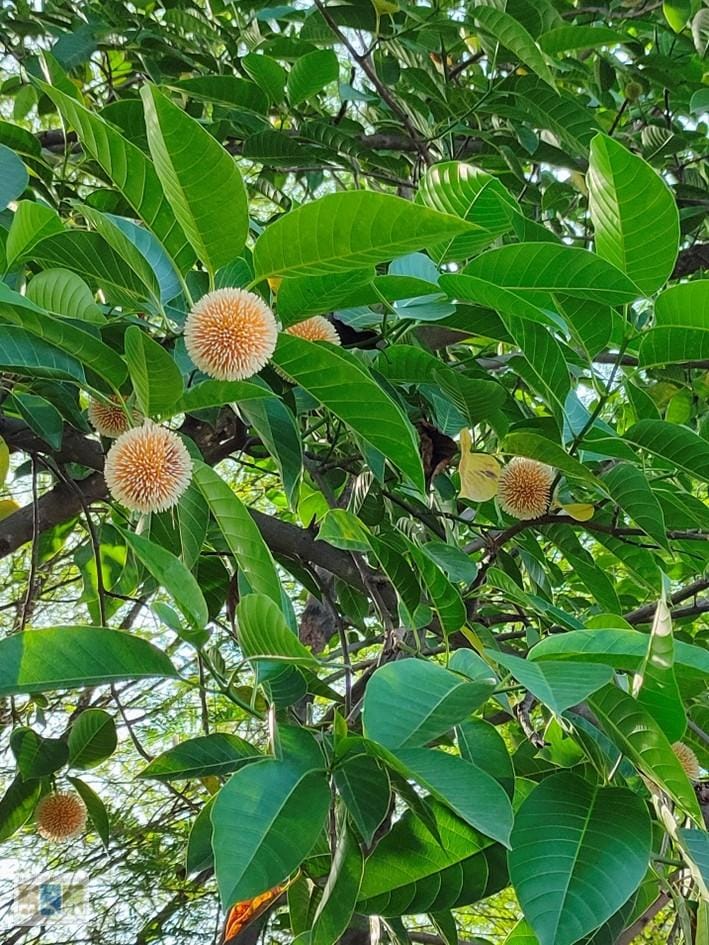
चित्र 3.2: नियोलैमार्किया कदंबा पुष्प काल में
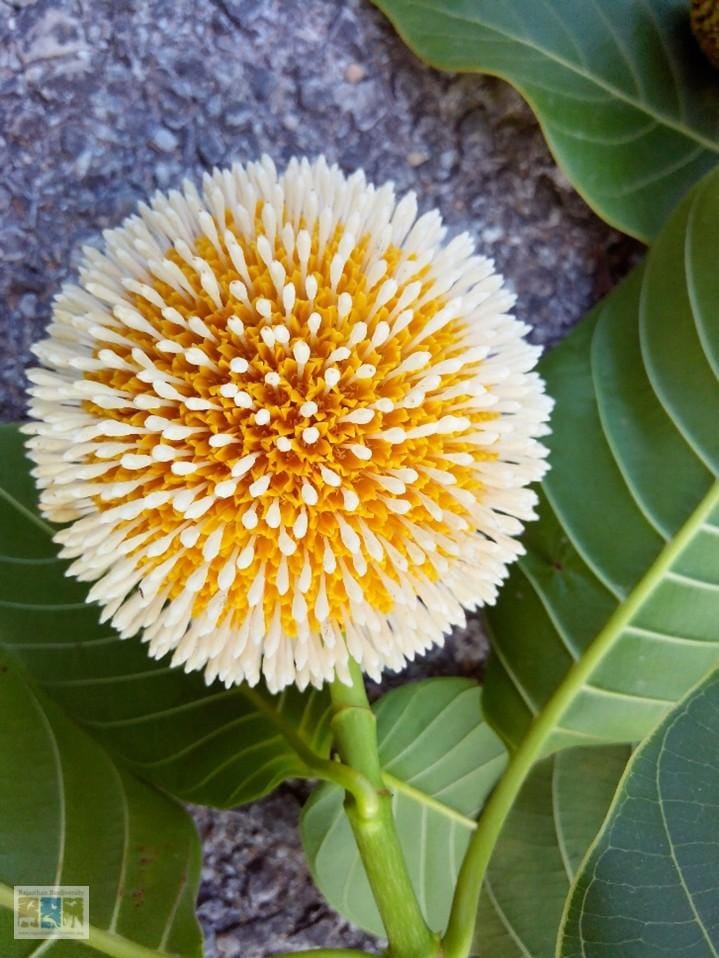
चित्र 3.3: नियोलैमार्किया कदंबा पुष्प
राजस्थान के तालाबों के तट पर विशेष रूप से संरक्षित किये जाने वाले कदम तथा इन्द्र धोक (Anogeissus sericea var. nummularia) दो खास वृक्ष हैं। इन्द्र धोक राजस्थान के अनेक भागों में, खास तौर से पश्चिमी राजस्थान के अर्द्ध – शुष्क क्षेत्र के तालाबों के तट पर पाया जाता है तथा समाज द्वारा सदियों से संरक्षित किया जा रहा है। राजस्थान के तालाब तटों पर बरगद, पीपल एवं नीम भी विशेष रूप से पाये जाते हैं जिनका महत्व सर्व विदित है। हमें तालाबों की पालों पर वृक्षो को लगाने, बचाने व संरक्षित करने की परंपरा को ससम्मान बचाये रखना चाहिए।
राजस्थान में तालाबों, जोहडों, नाडियों, बावडियों, केवडियों आदि परंपरागत जल संरक्षण संरचनाओं का सदियों से महत्व रहा है। तालाबों के कई आकार – प्रकार एवं नामकरण भी प्रचलन में रहे हैं। जिस तरह कदम की उपस्थिति से कोई तालाब कदम तालाब के रूप में जाना जाता है उसी तरह कमल यानि पदम की उपस्थिति से कई तालाब “पदम तालाब” का खिताब पाते रहे हैं। हमें जतनपूर्वक अपने तालाबों को बचाकर अच्छी प्राचीन परम्पराओं को अगली पीढ़ी को सौंपने में गर्व महसूस करना चाहिये।
सतीश कुमार शर्मा
राजस्थान वन सेवा (सेवा निवृत)
14-15, चकरिया आम्बा, रामपुरा चैराहा, झाडोल रोड़
पोस्ट – नाई, उदयपुर – 313031, राजस्थान, भारत
